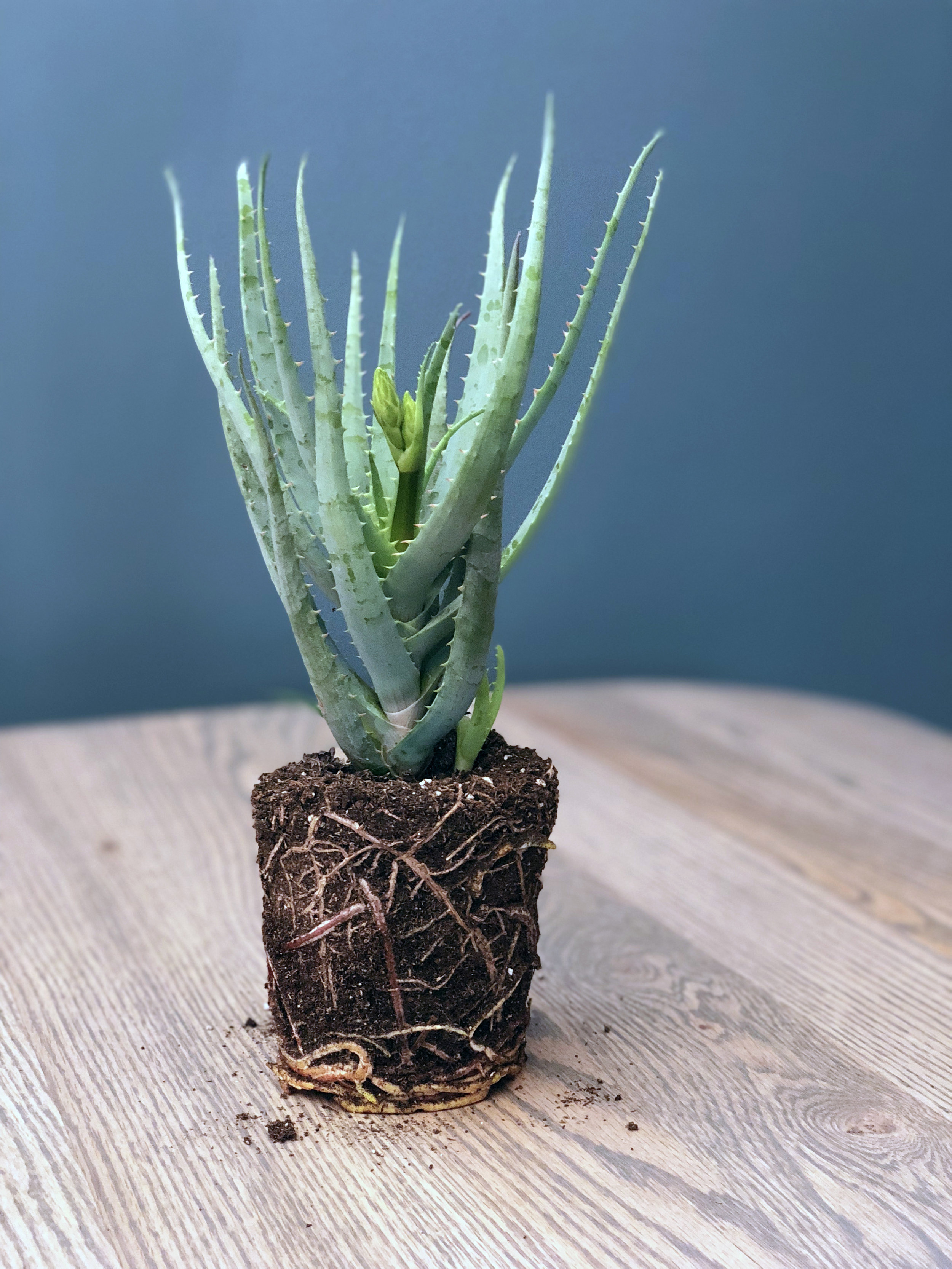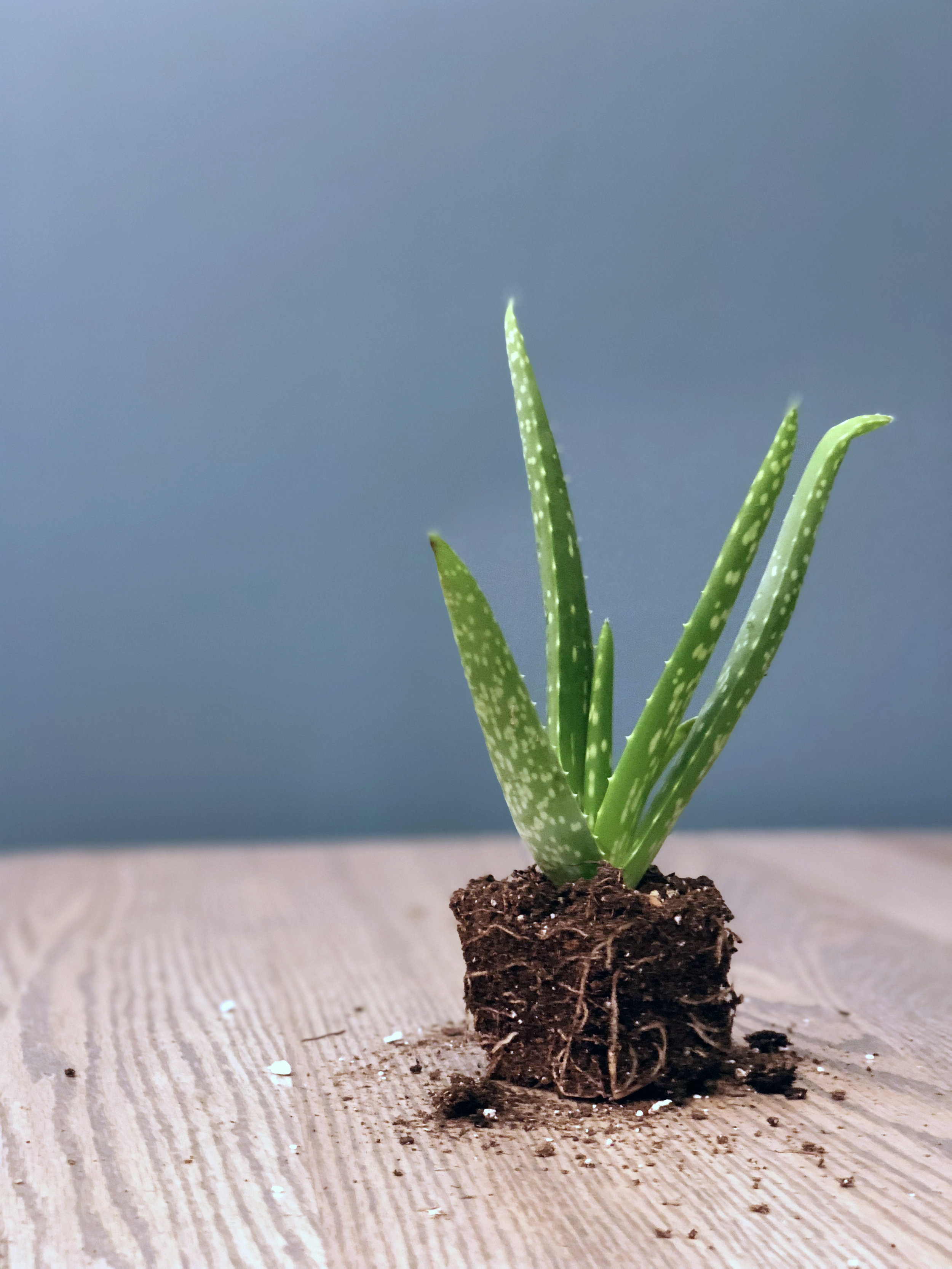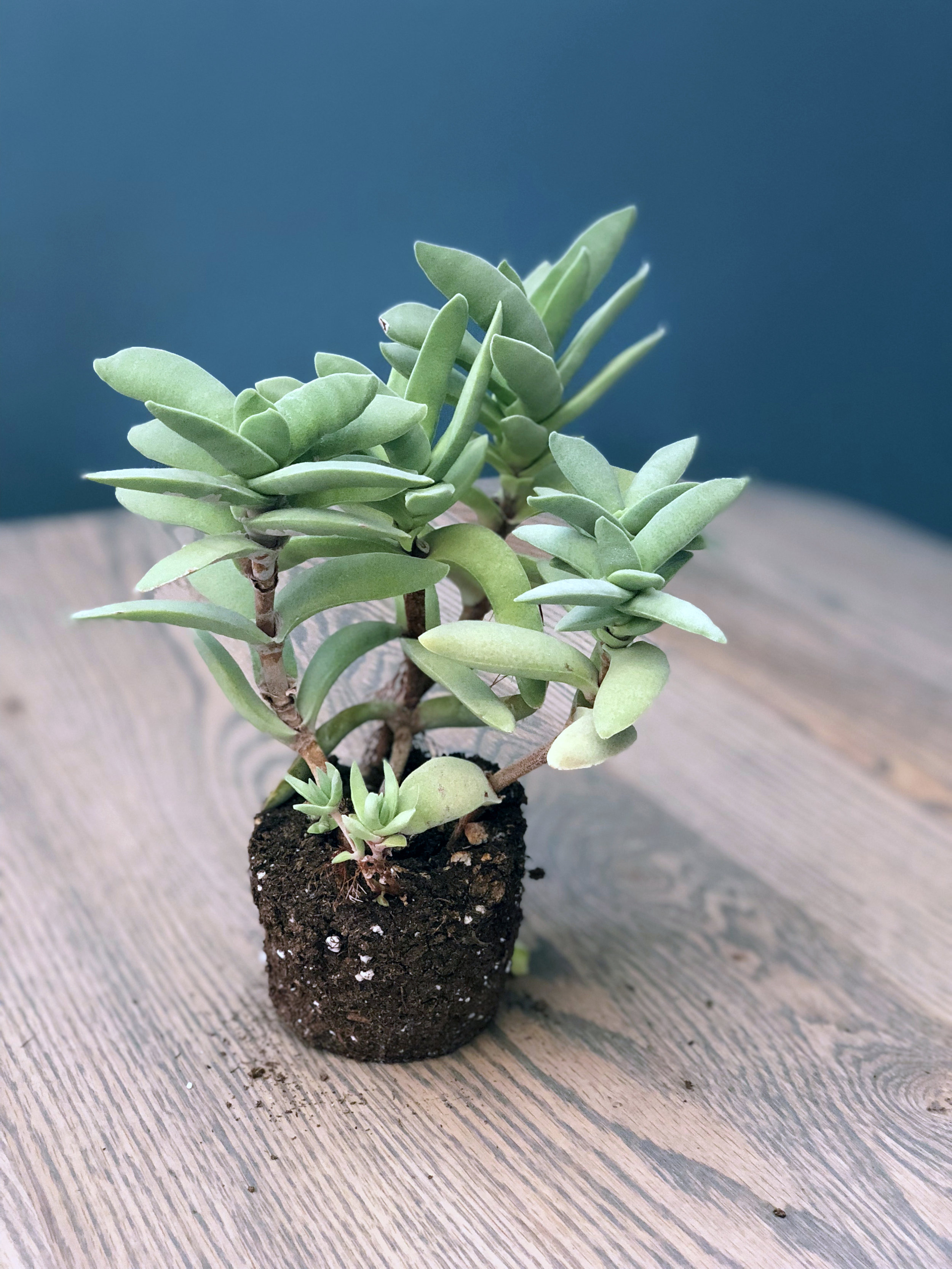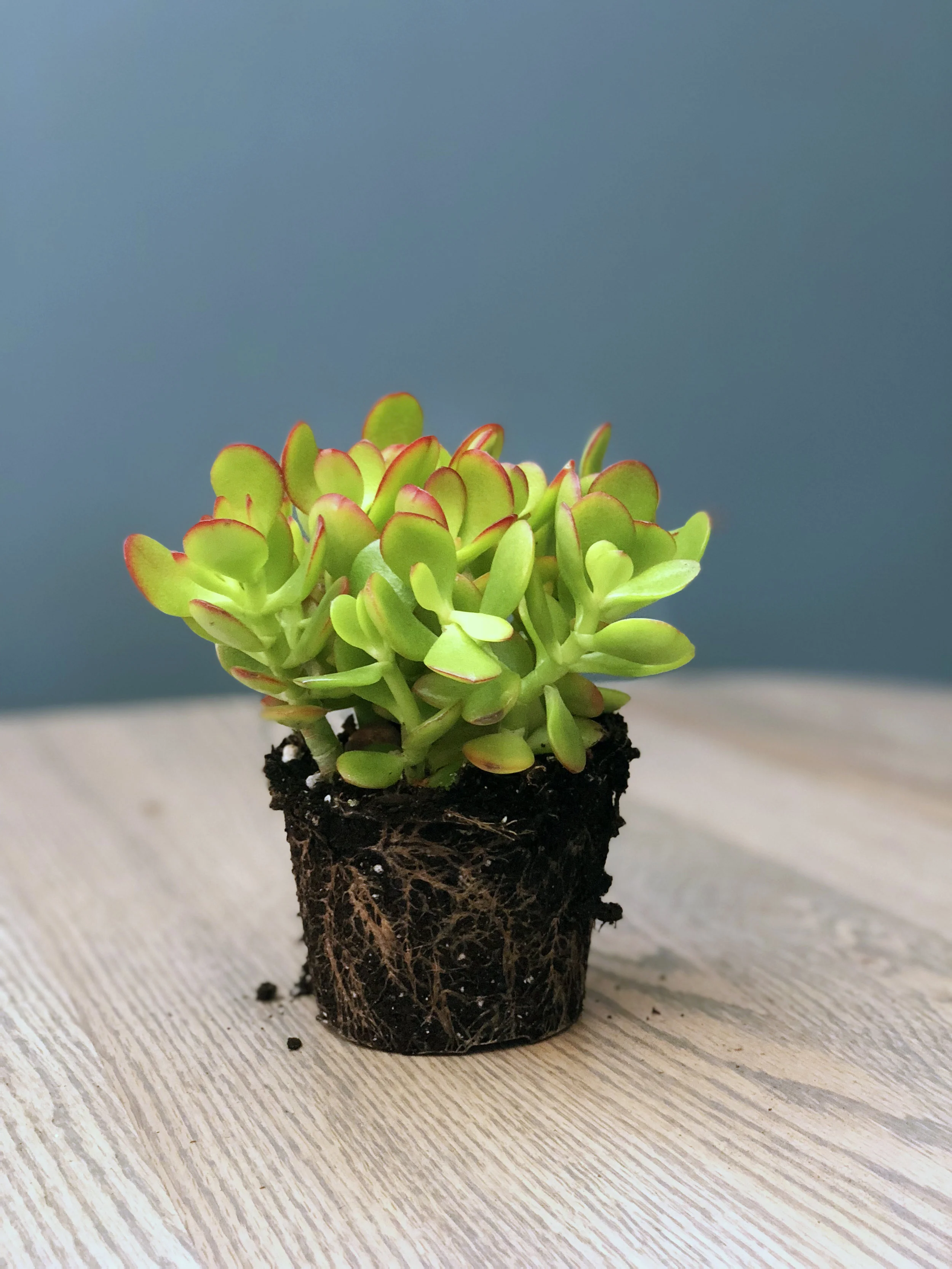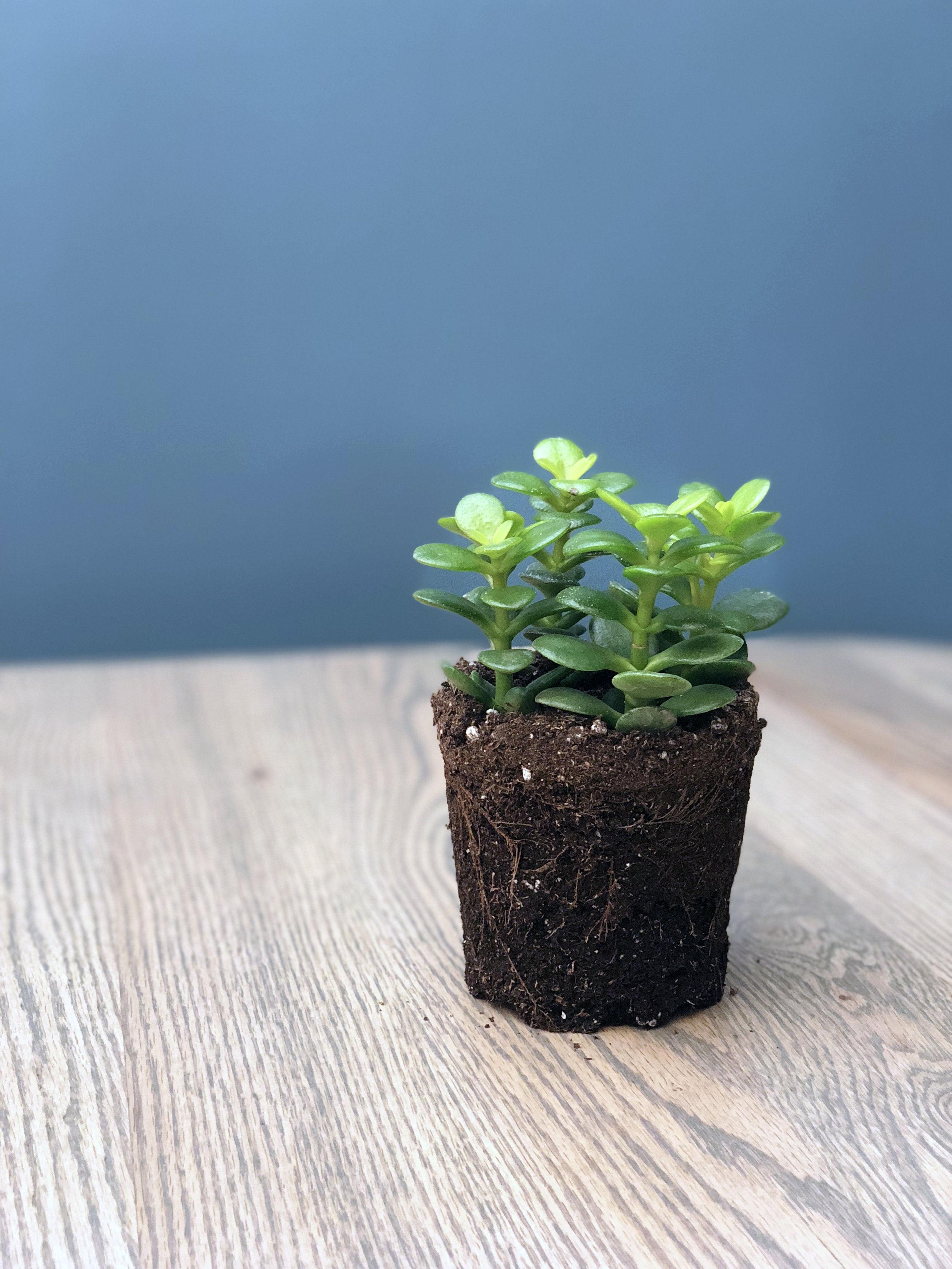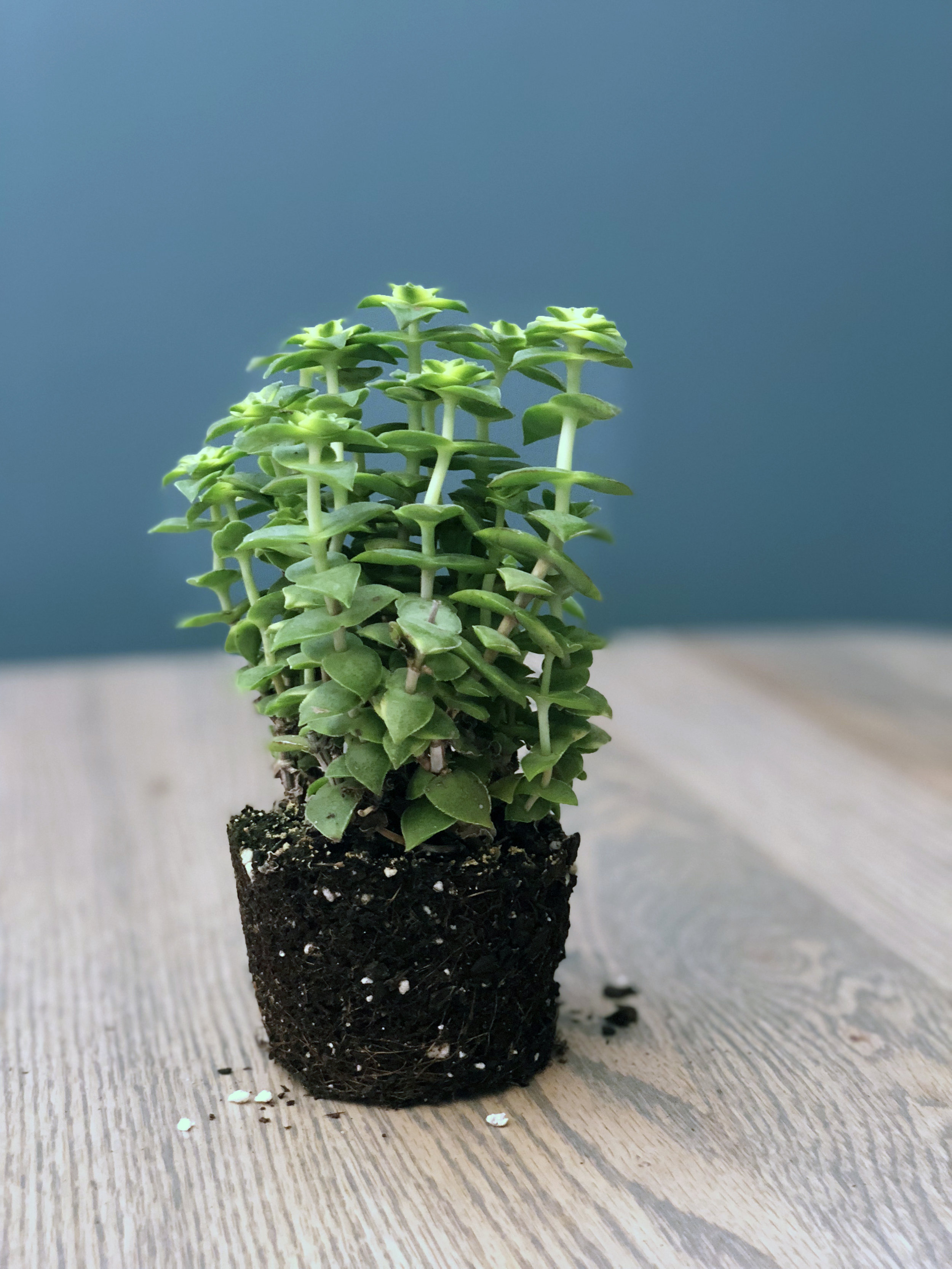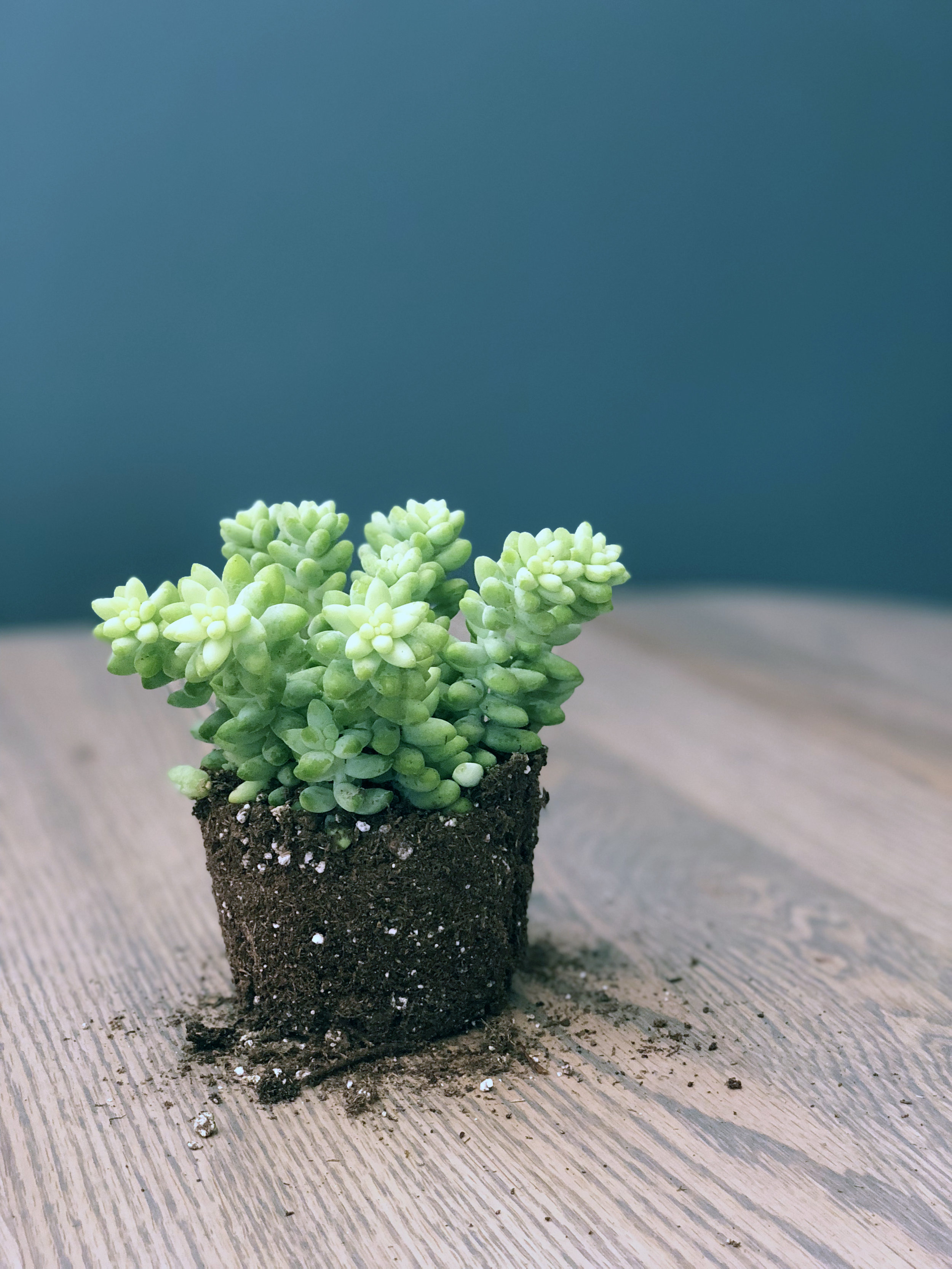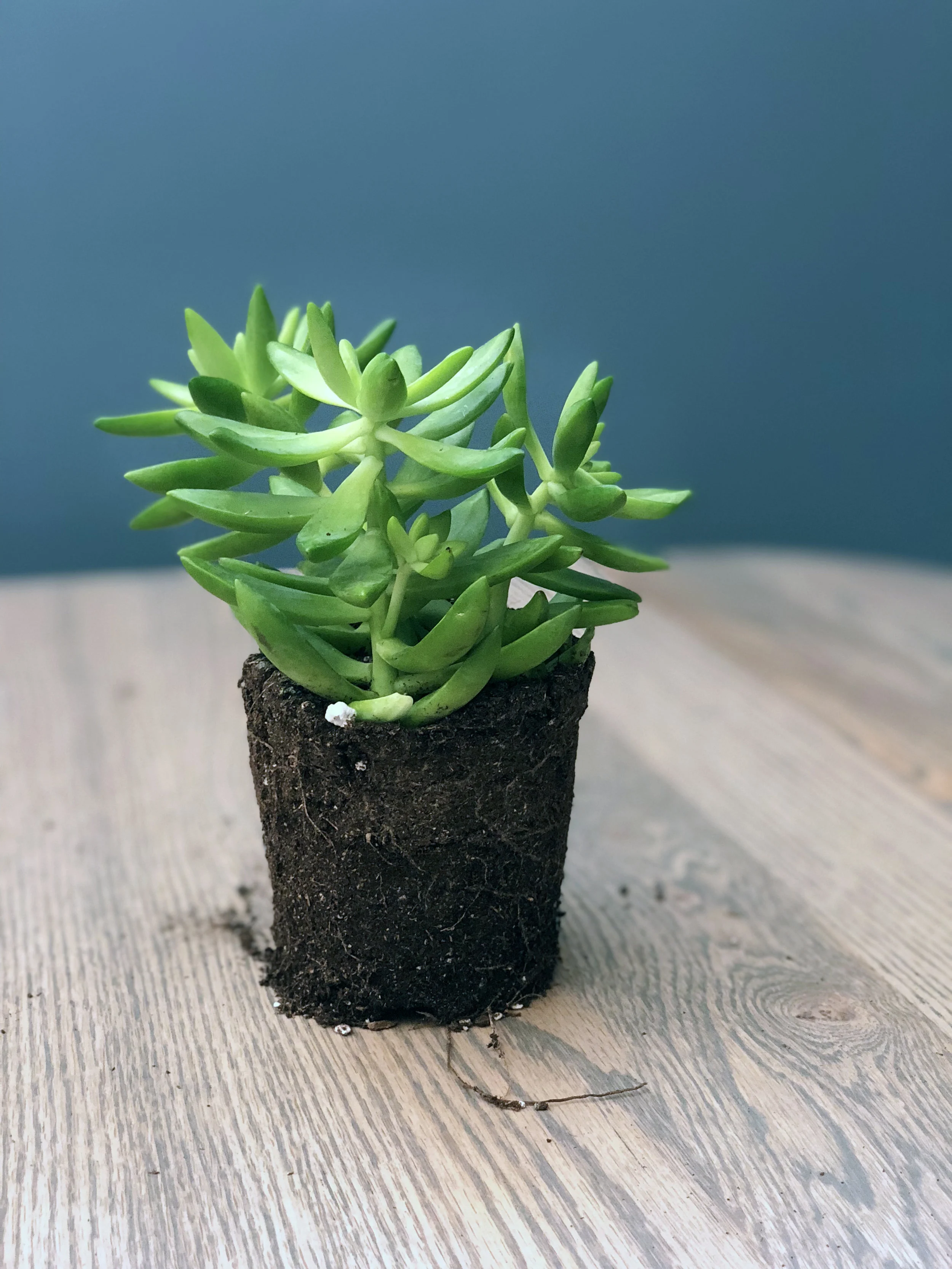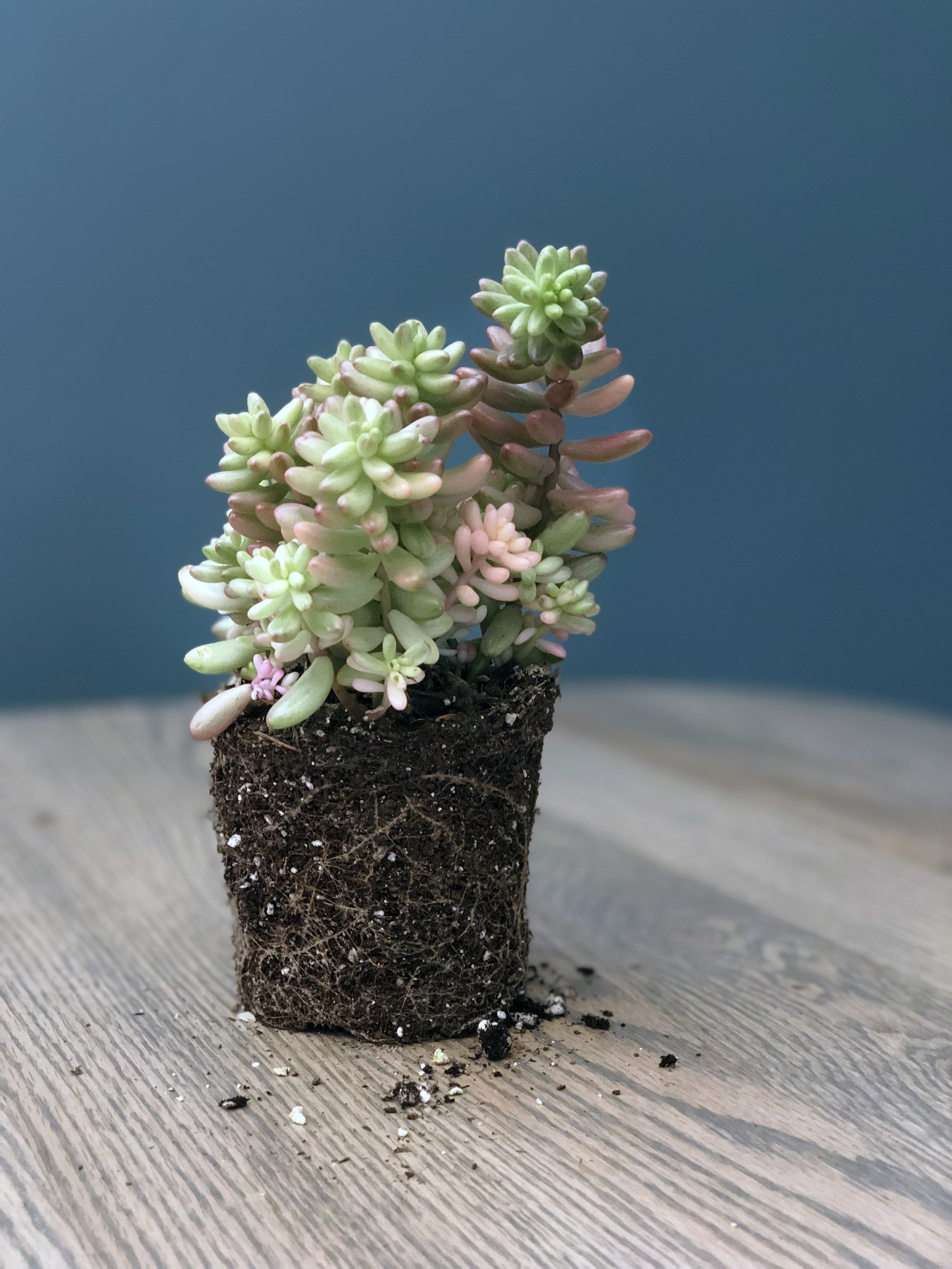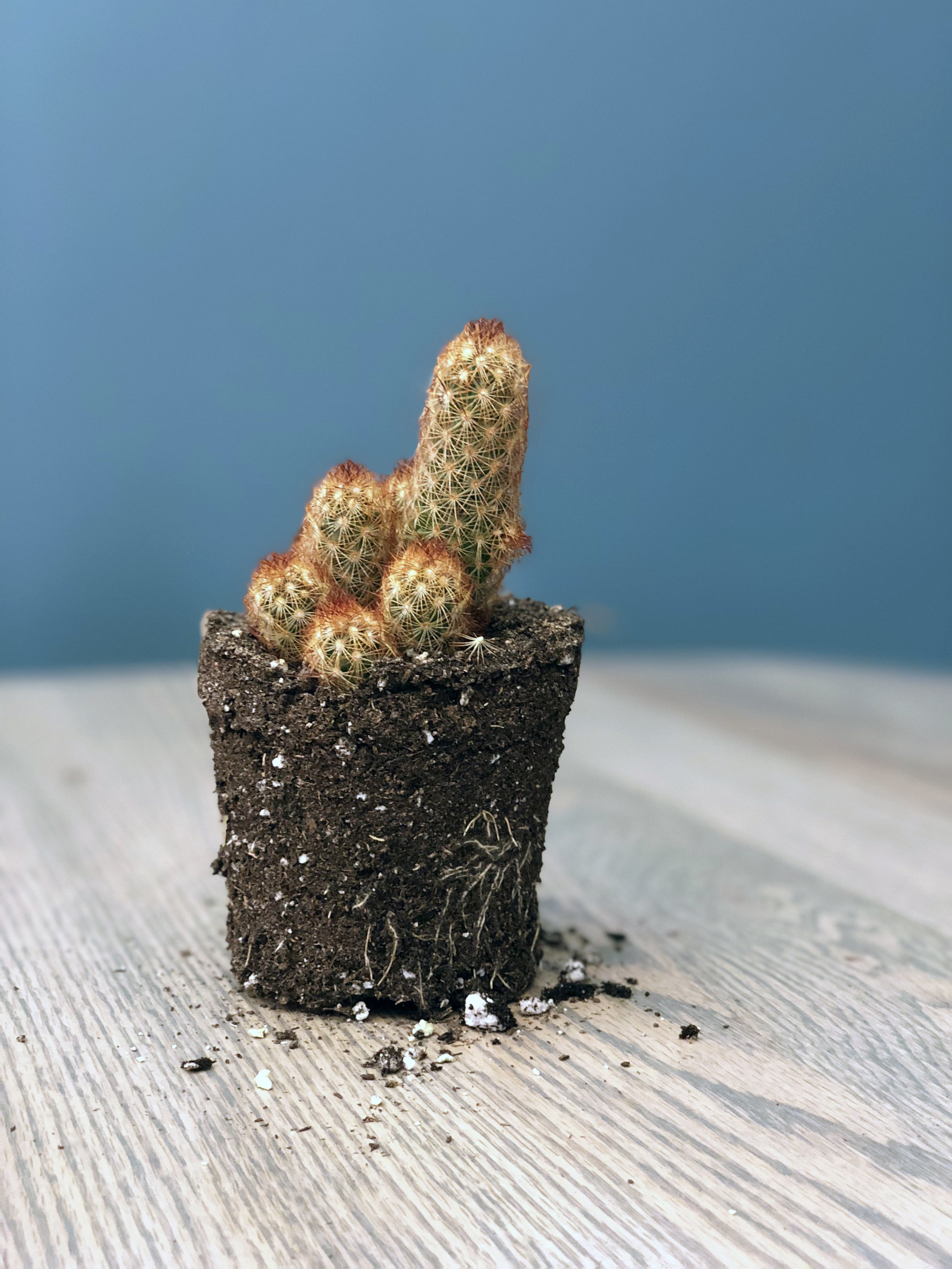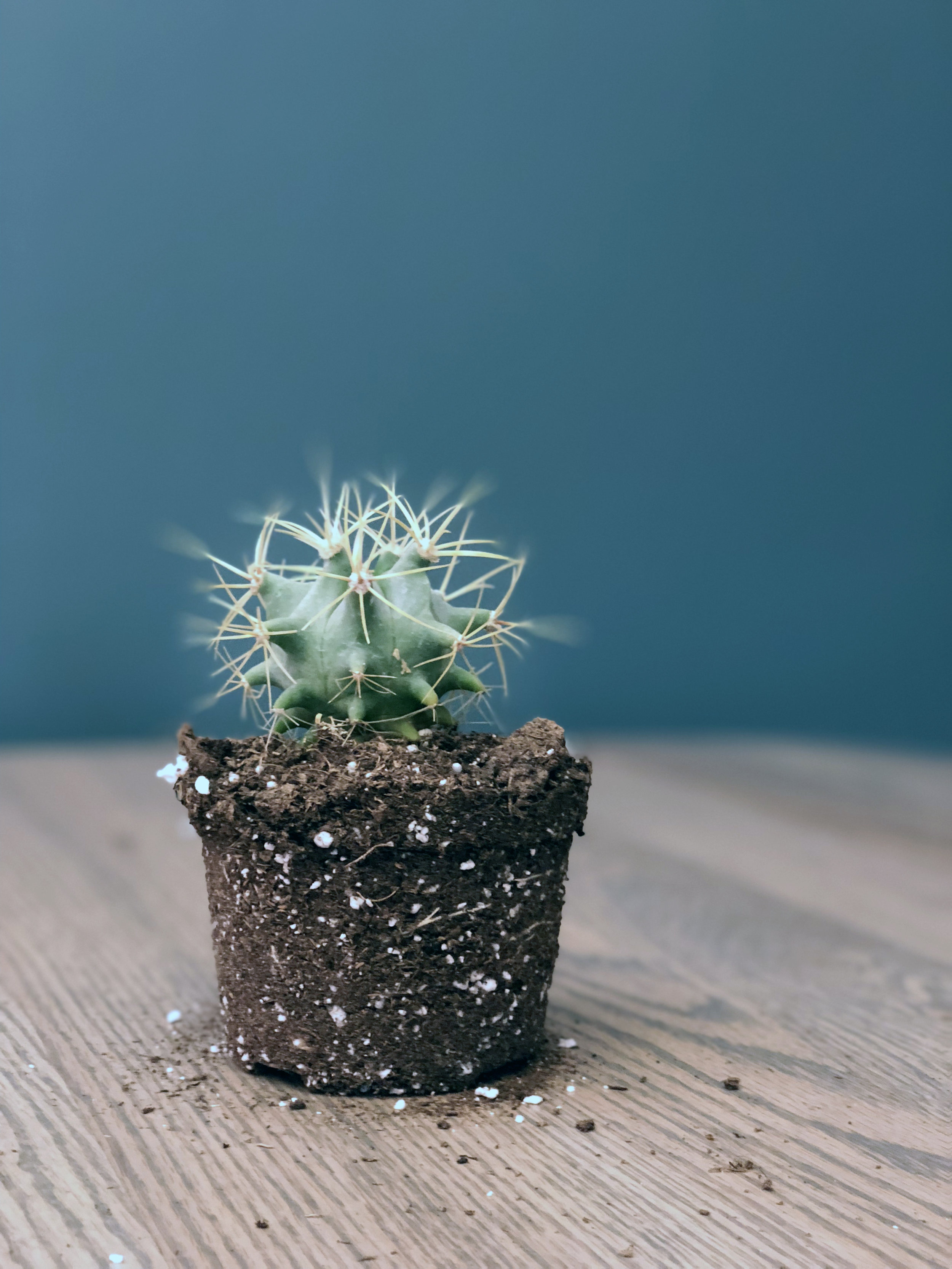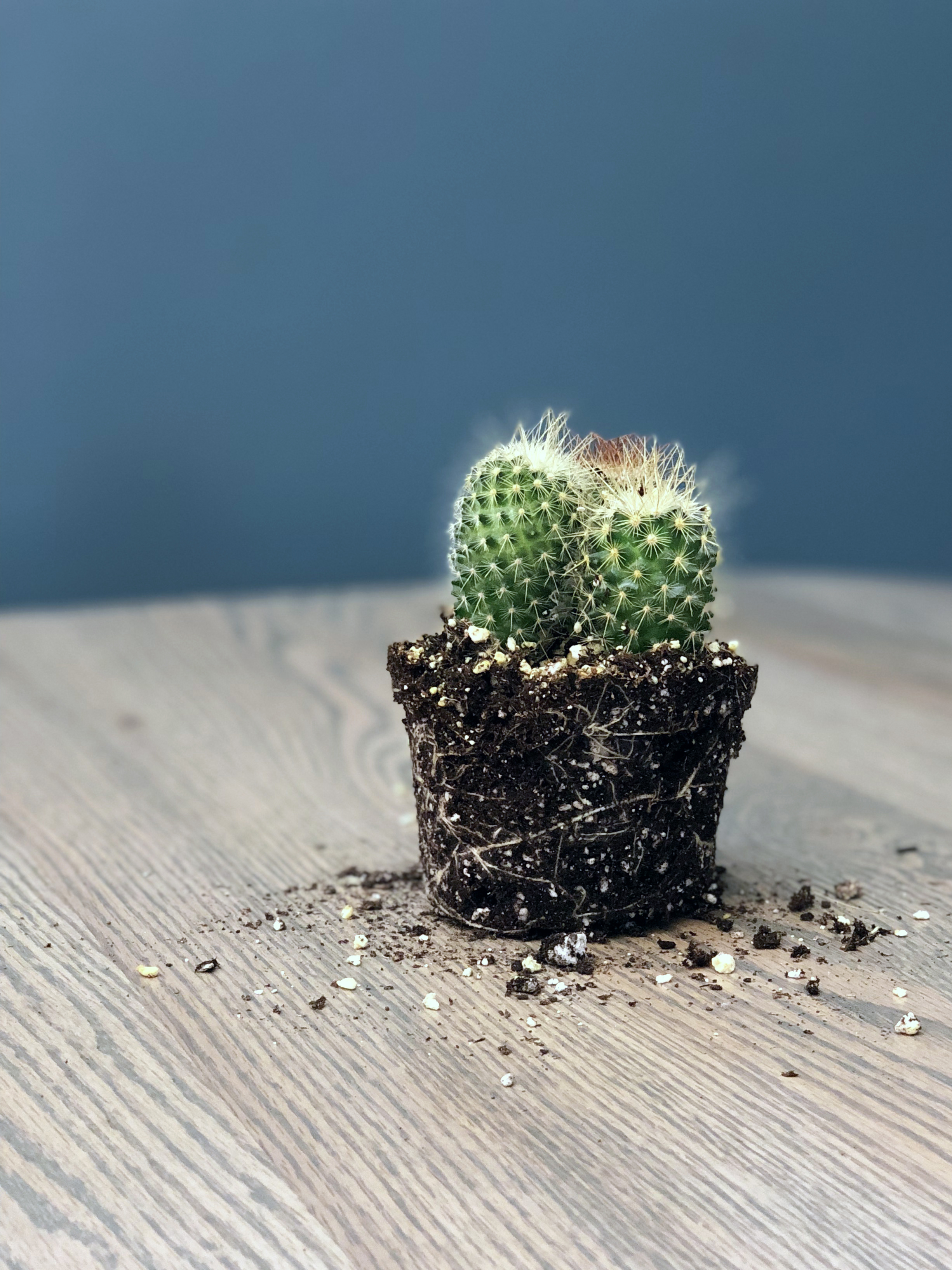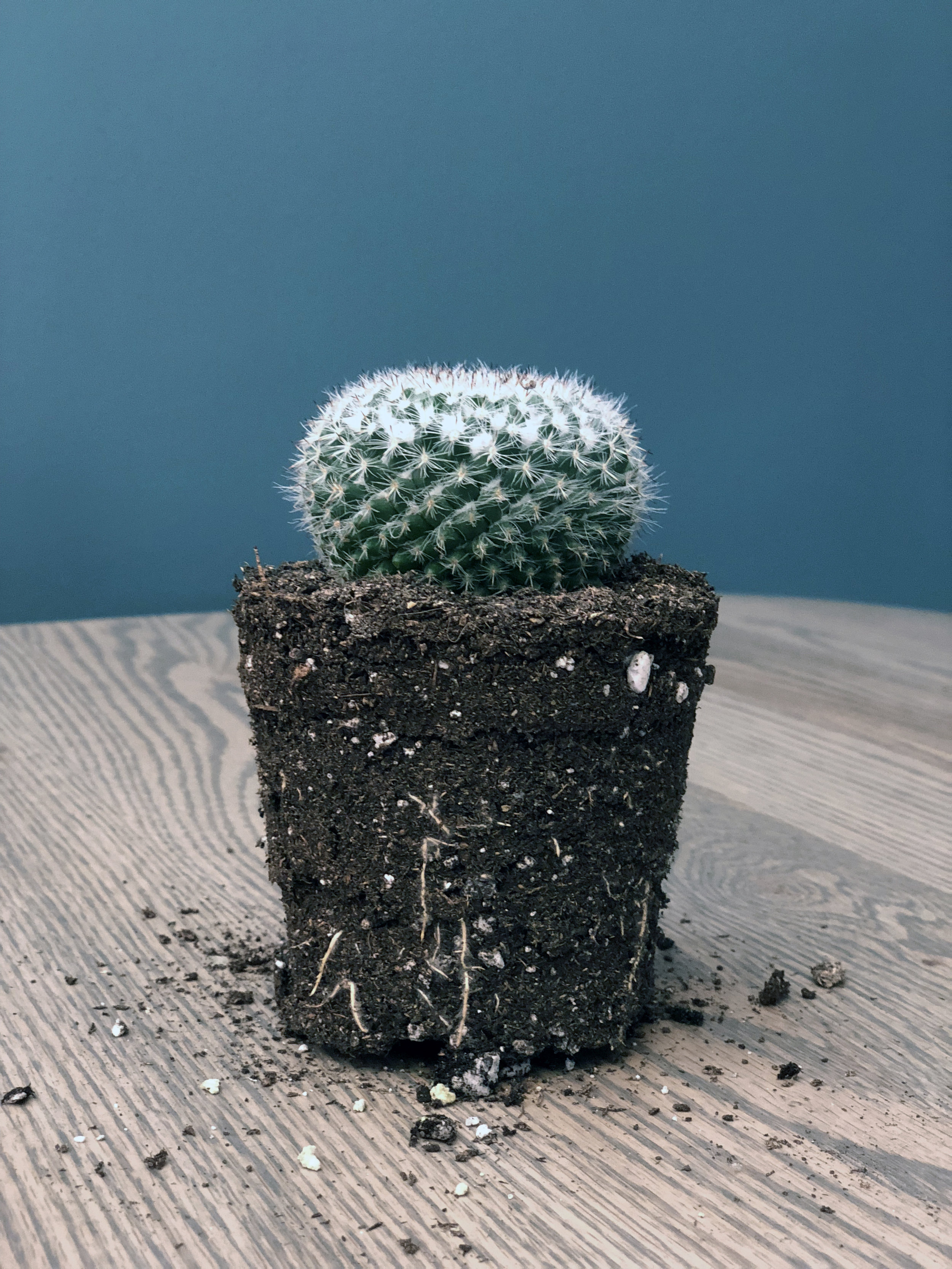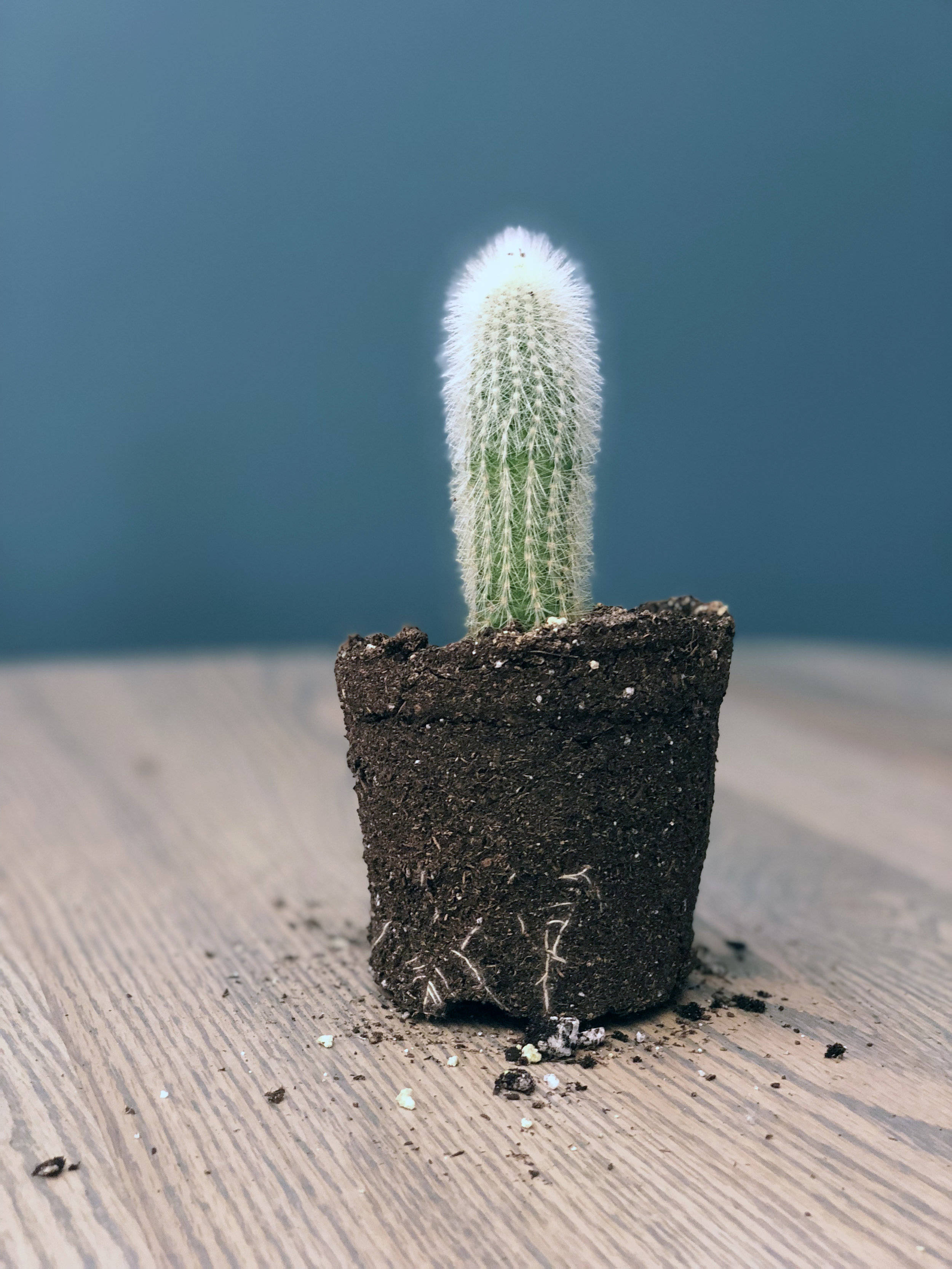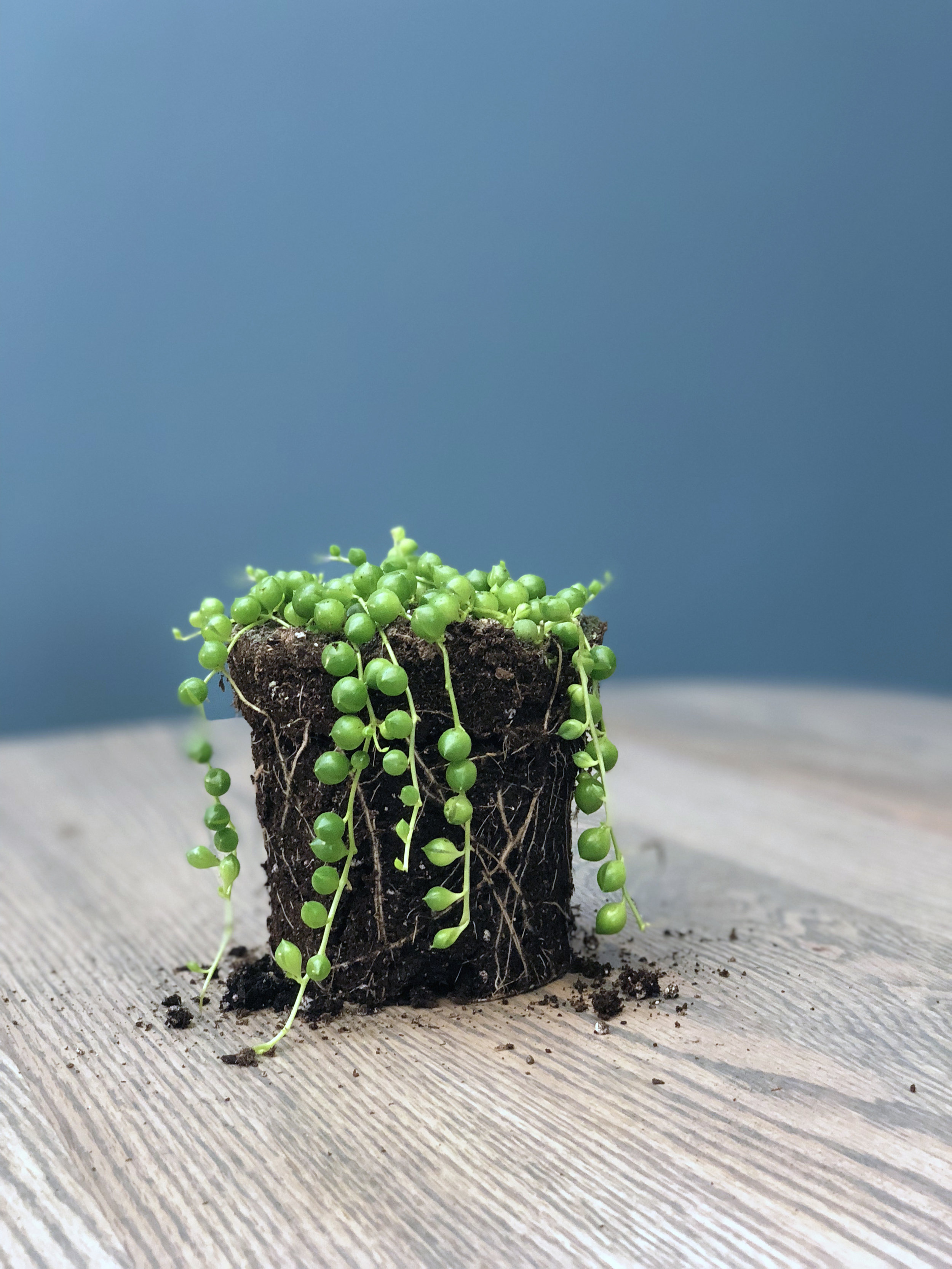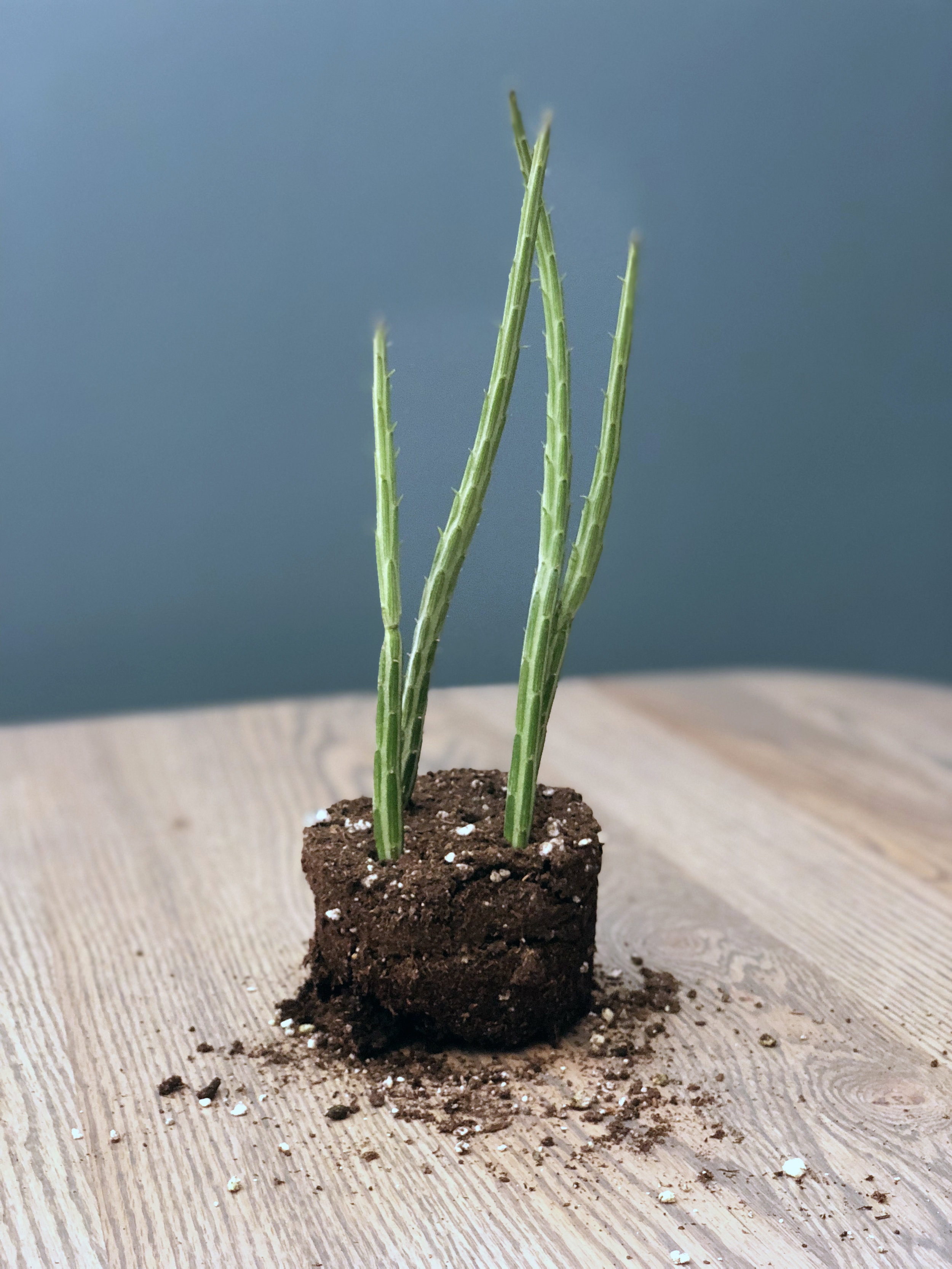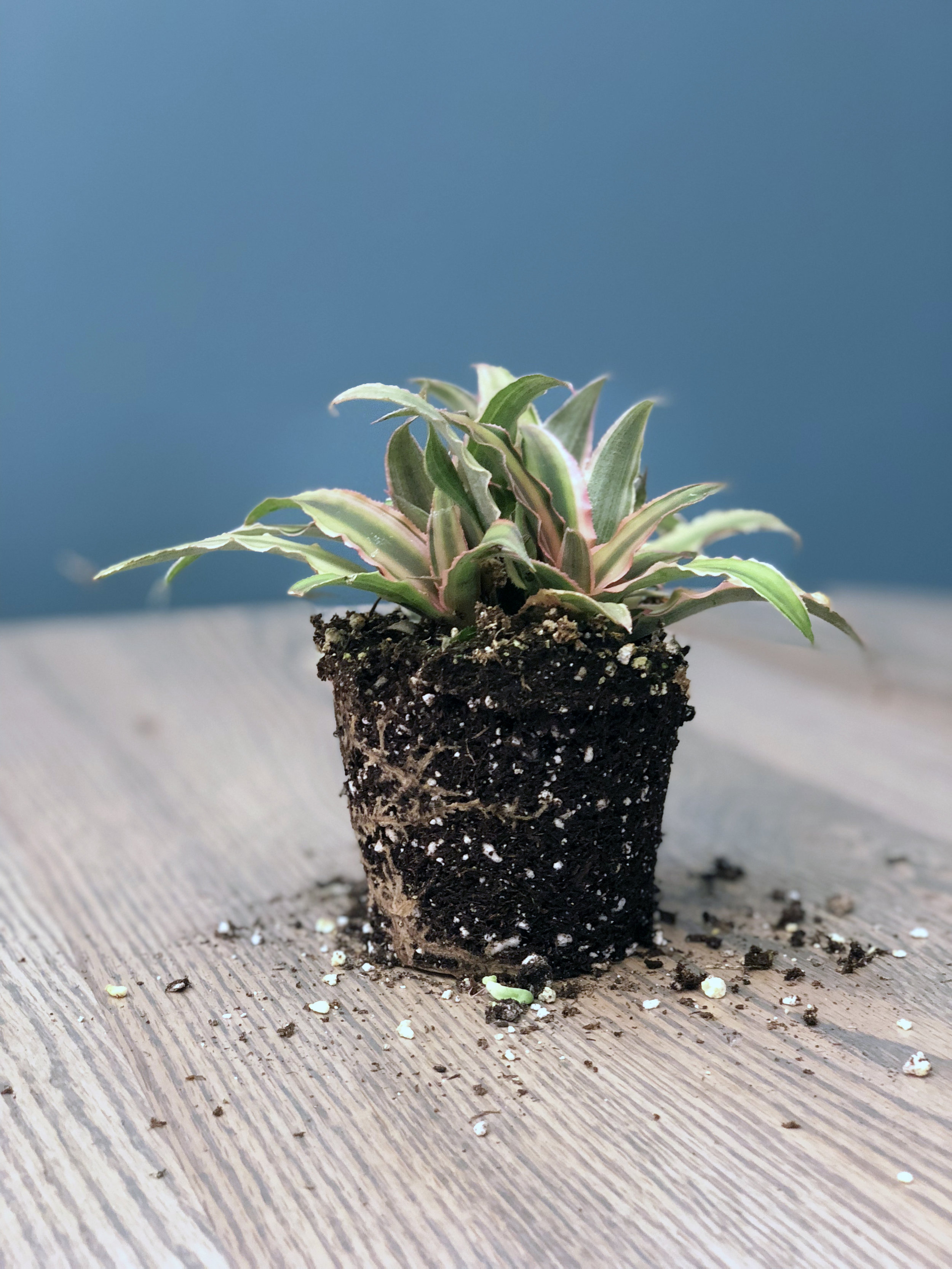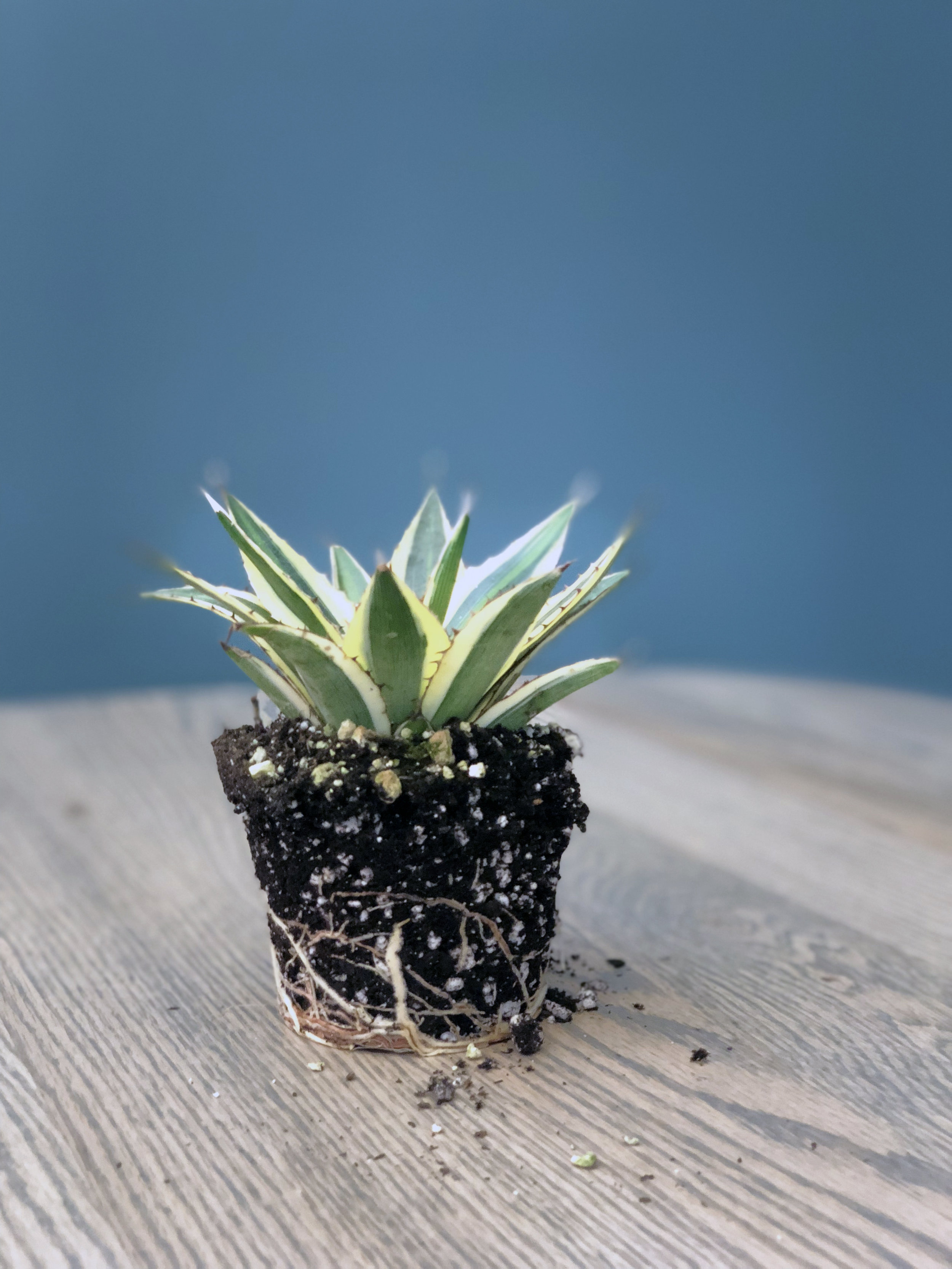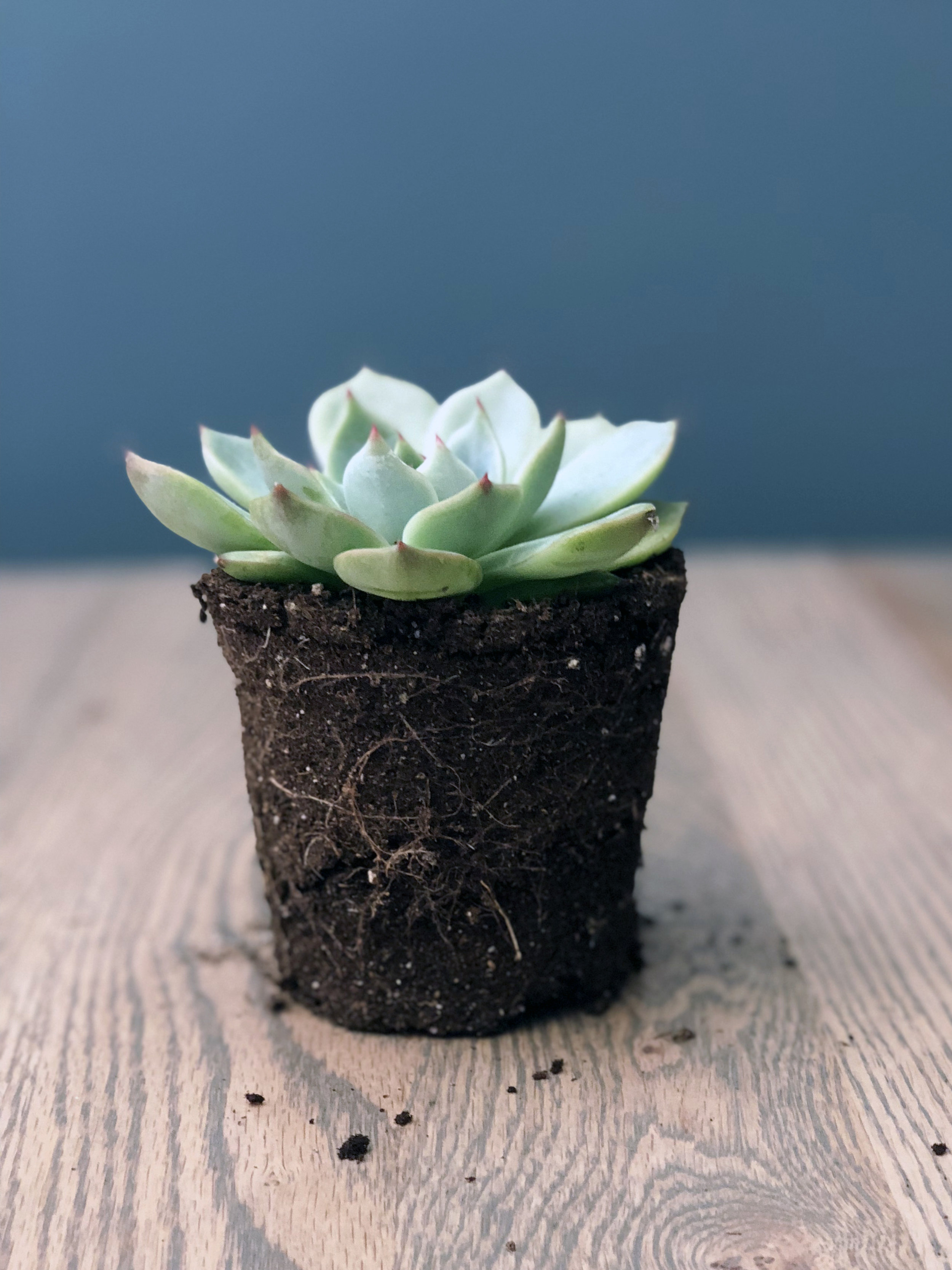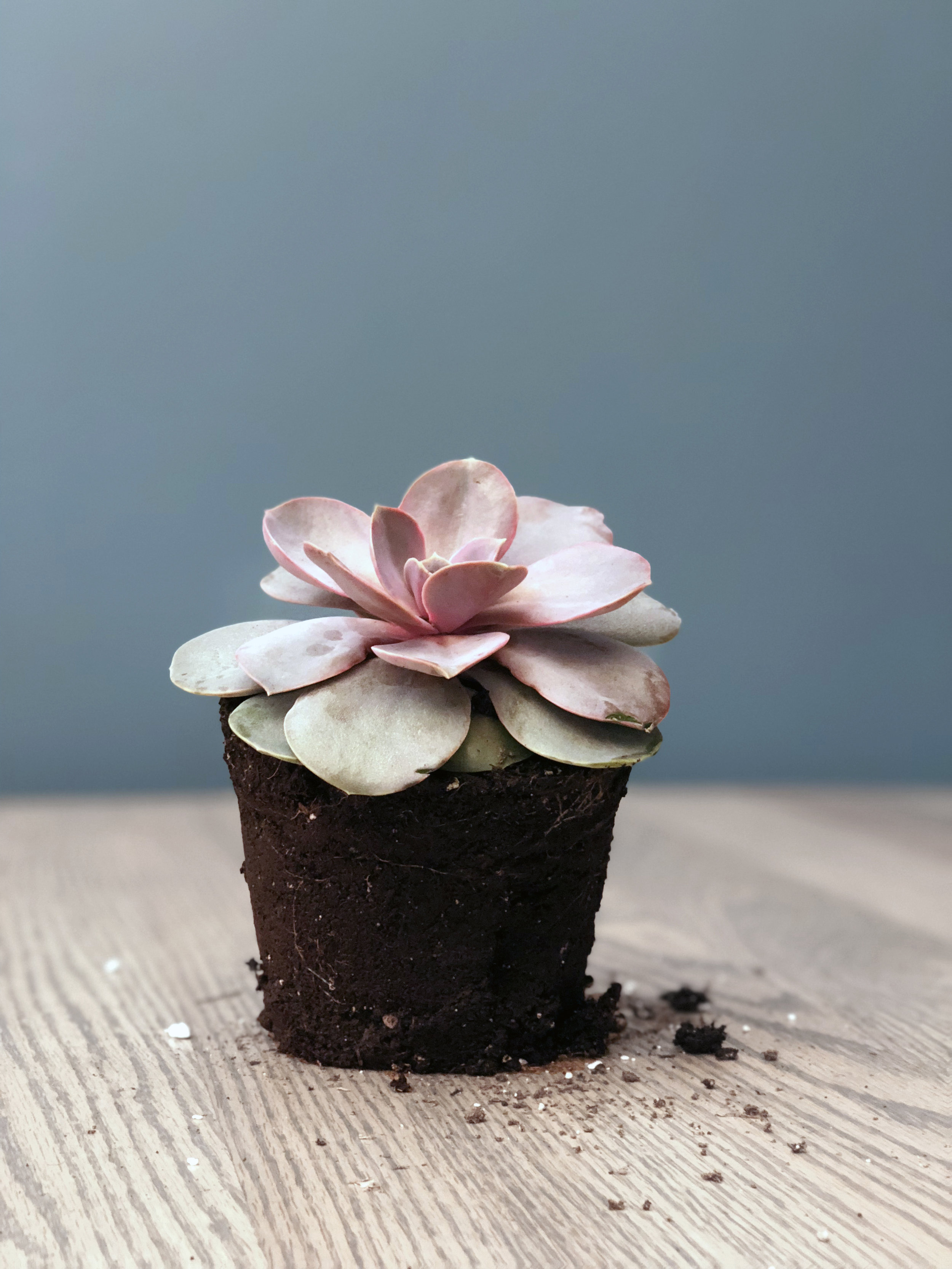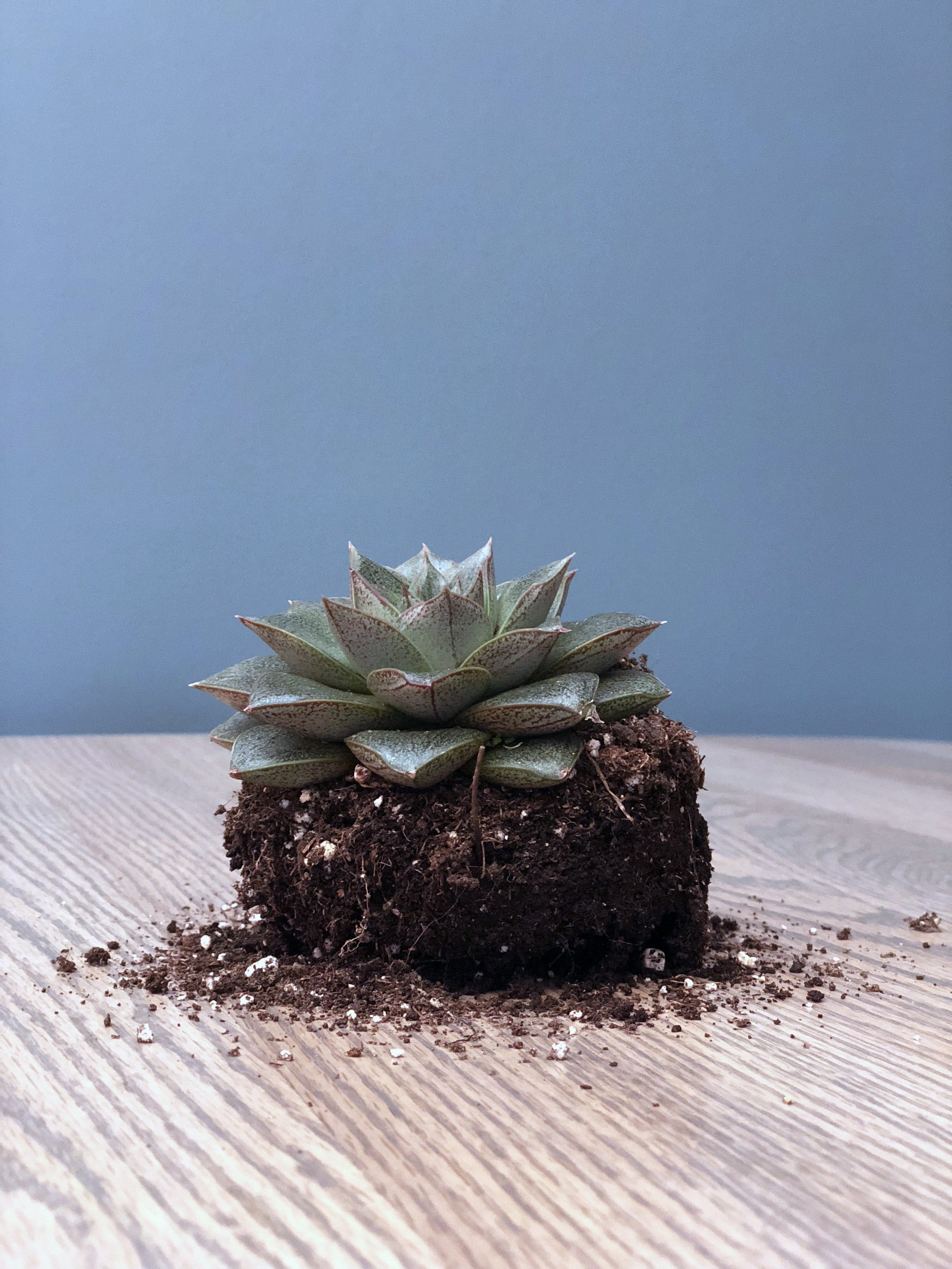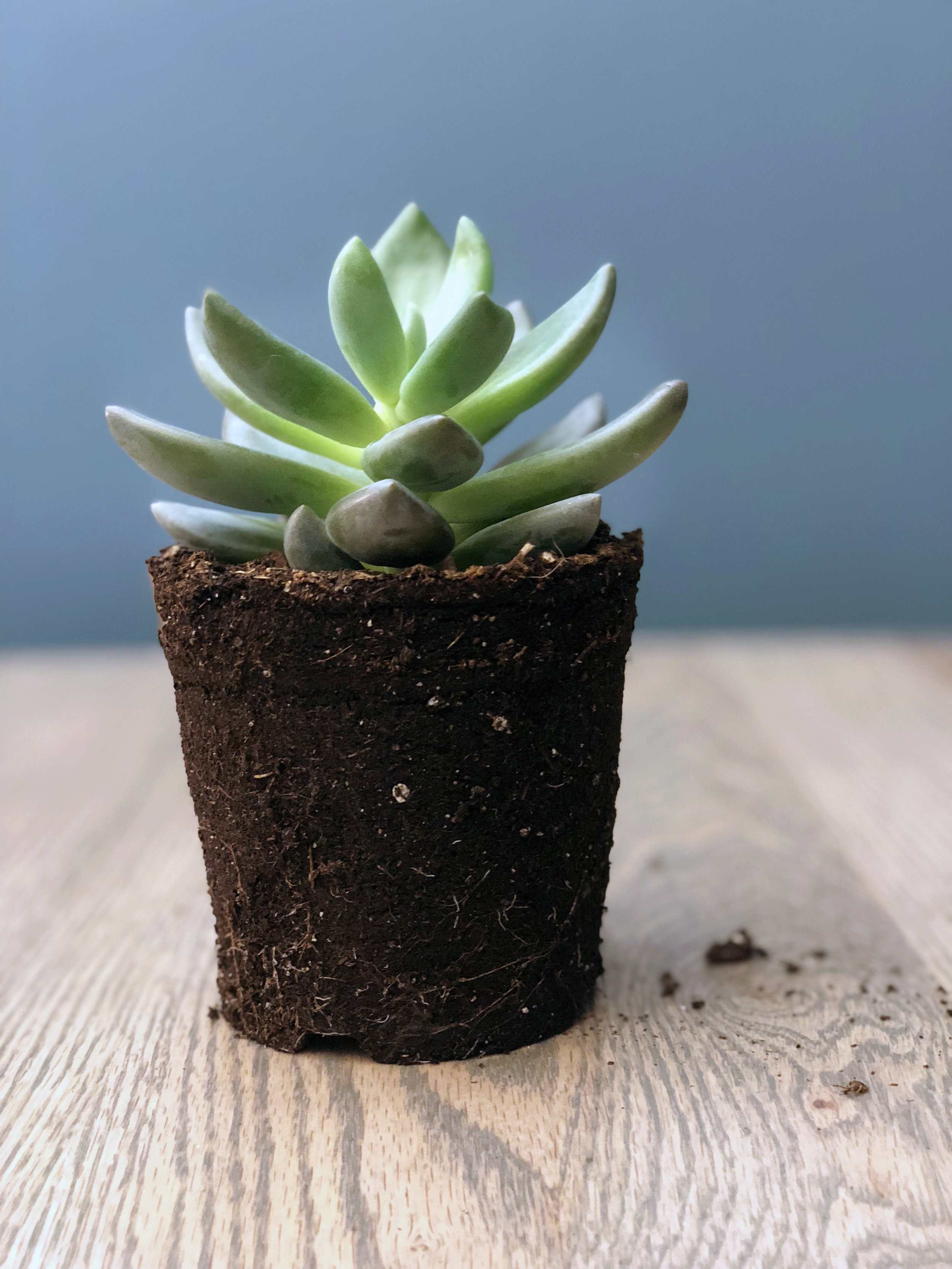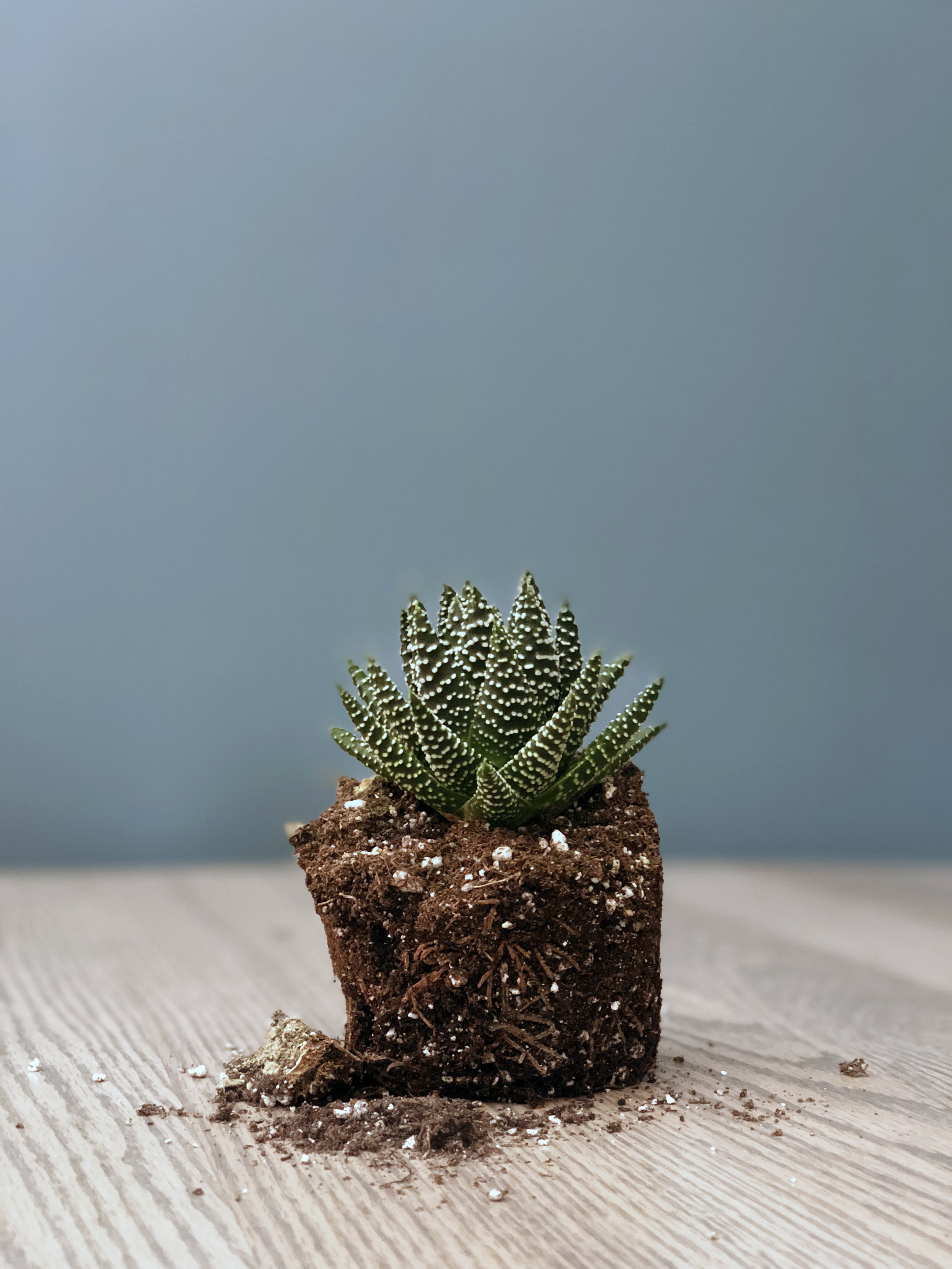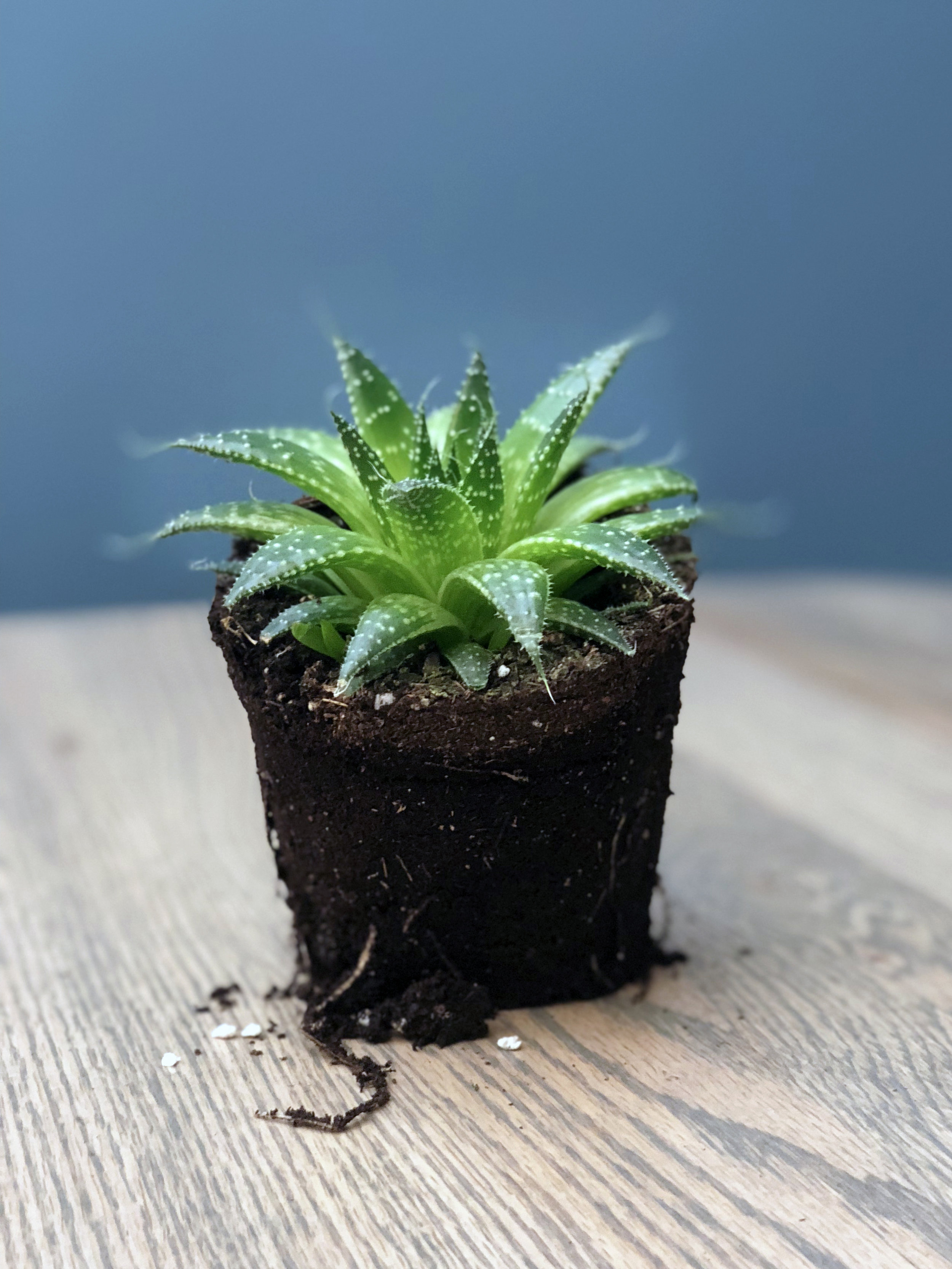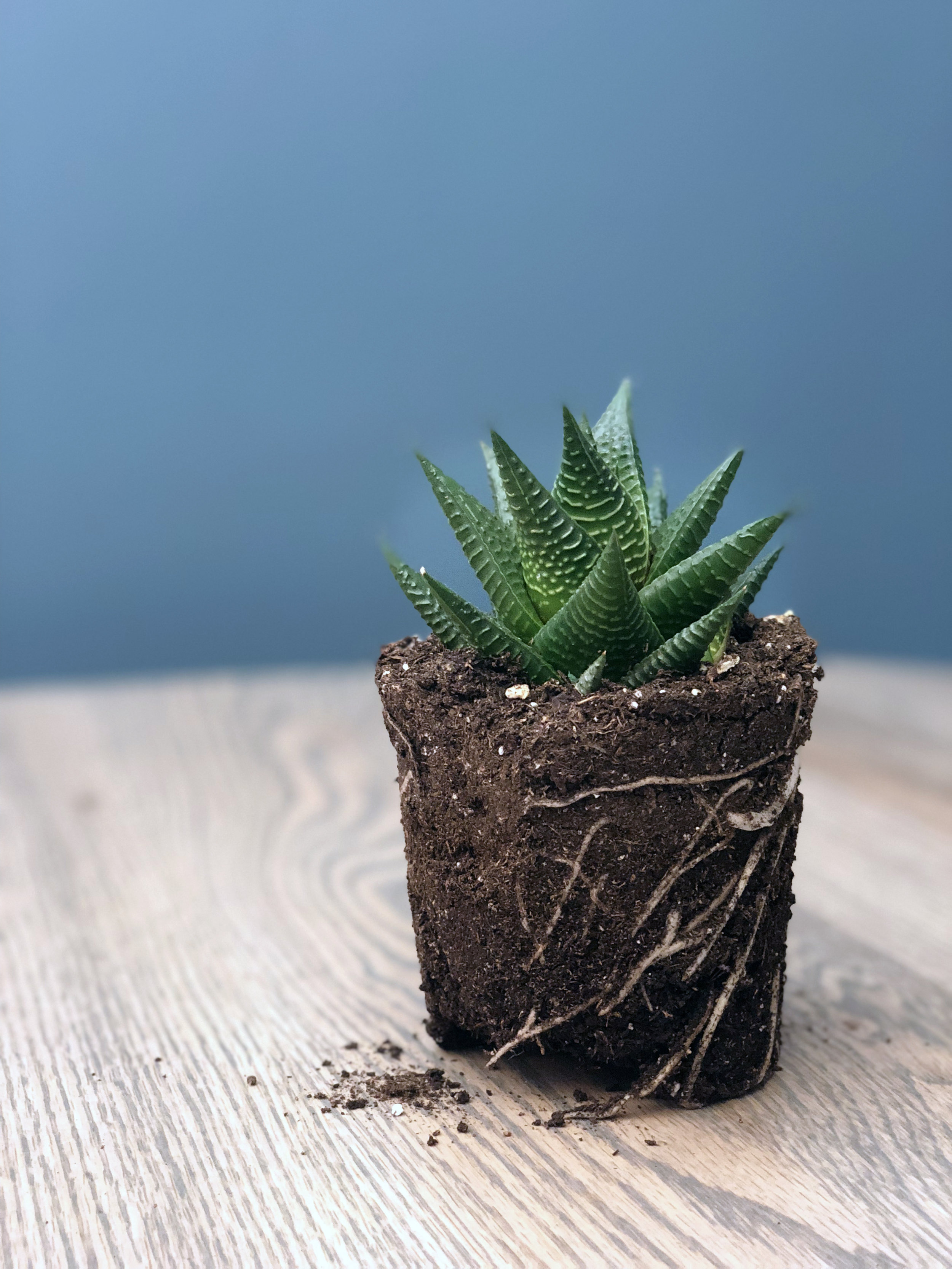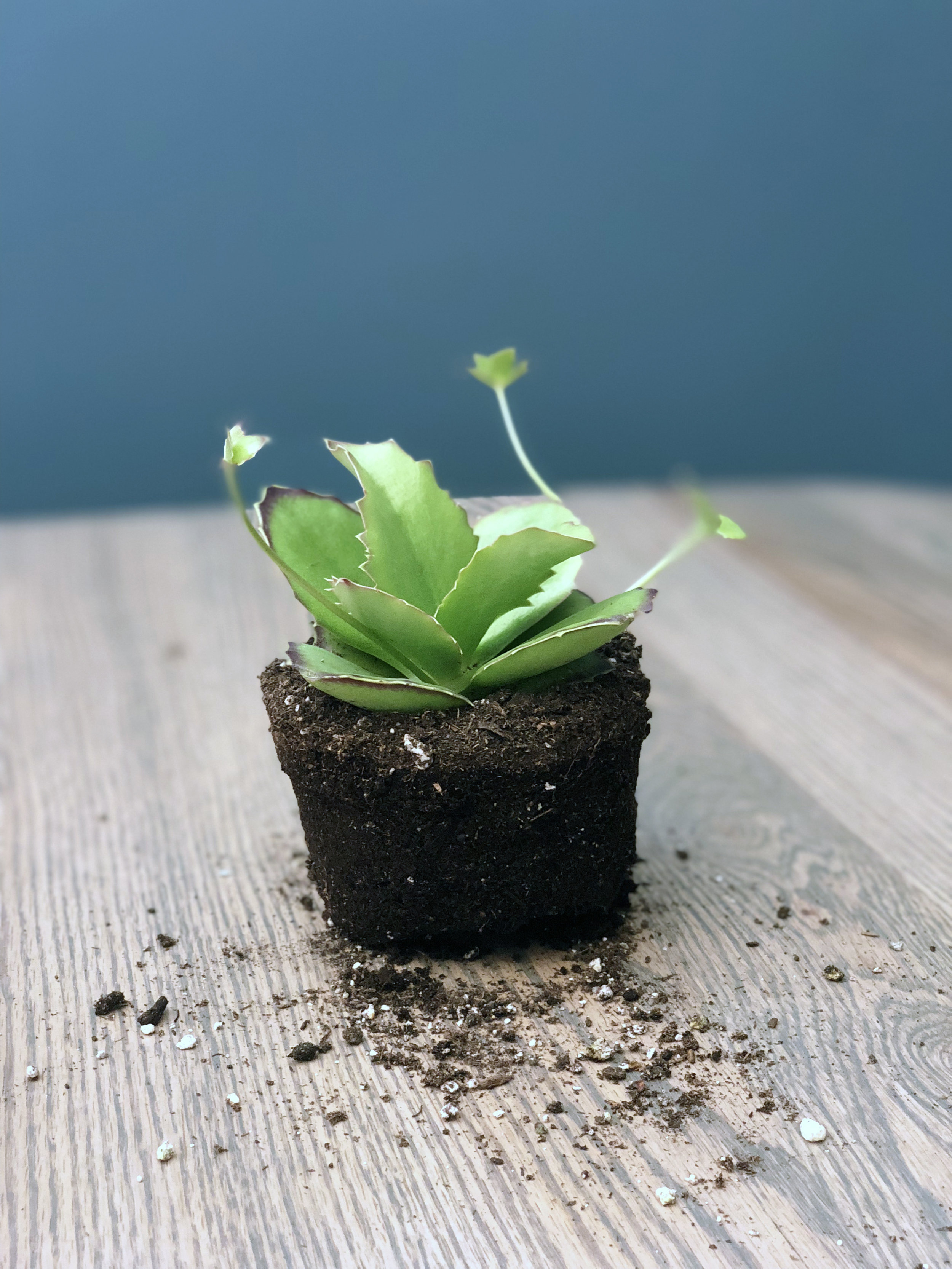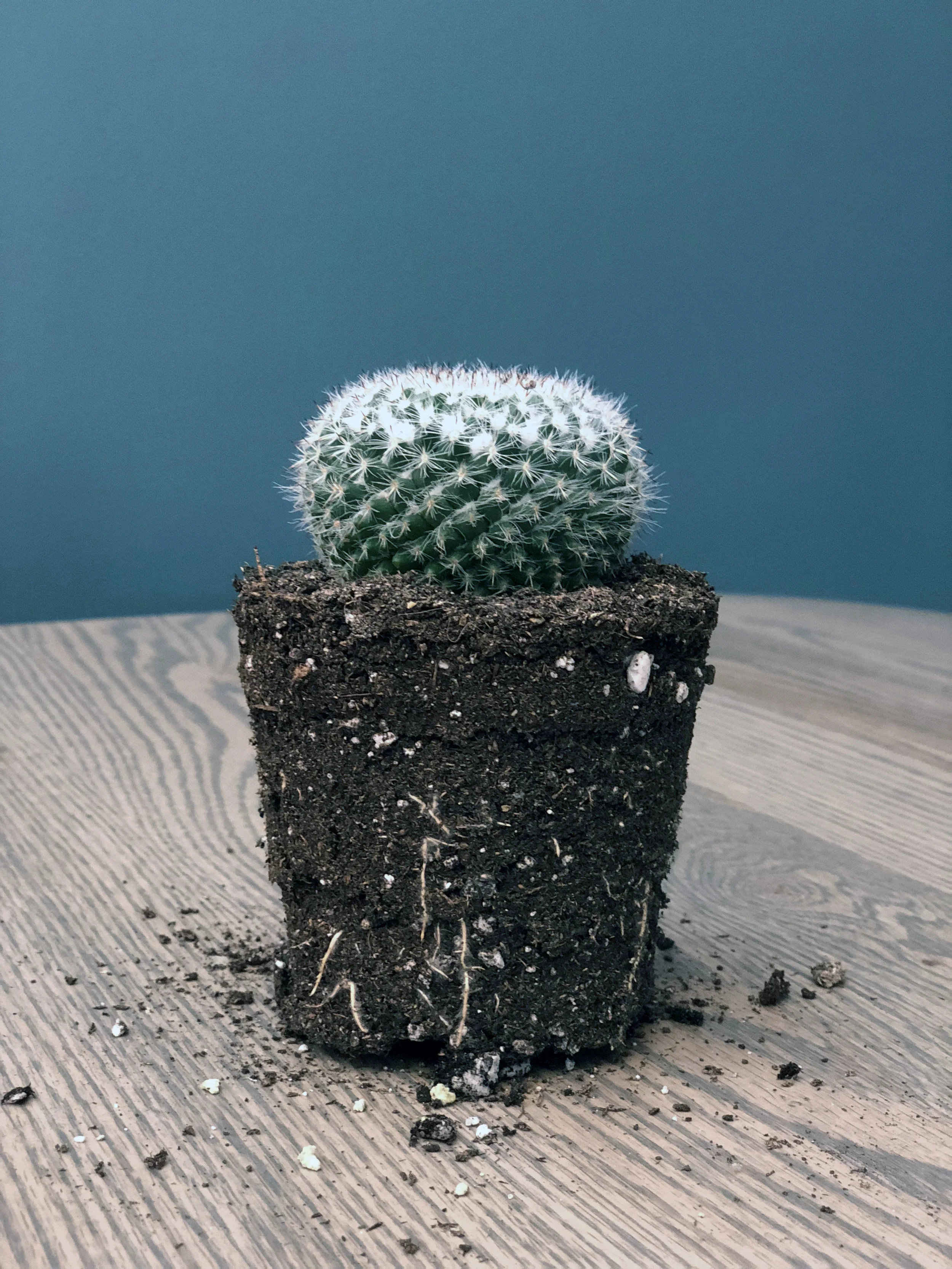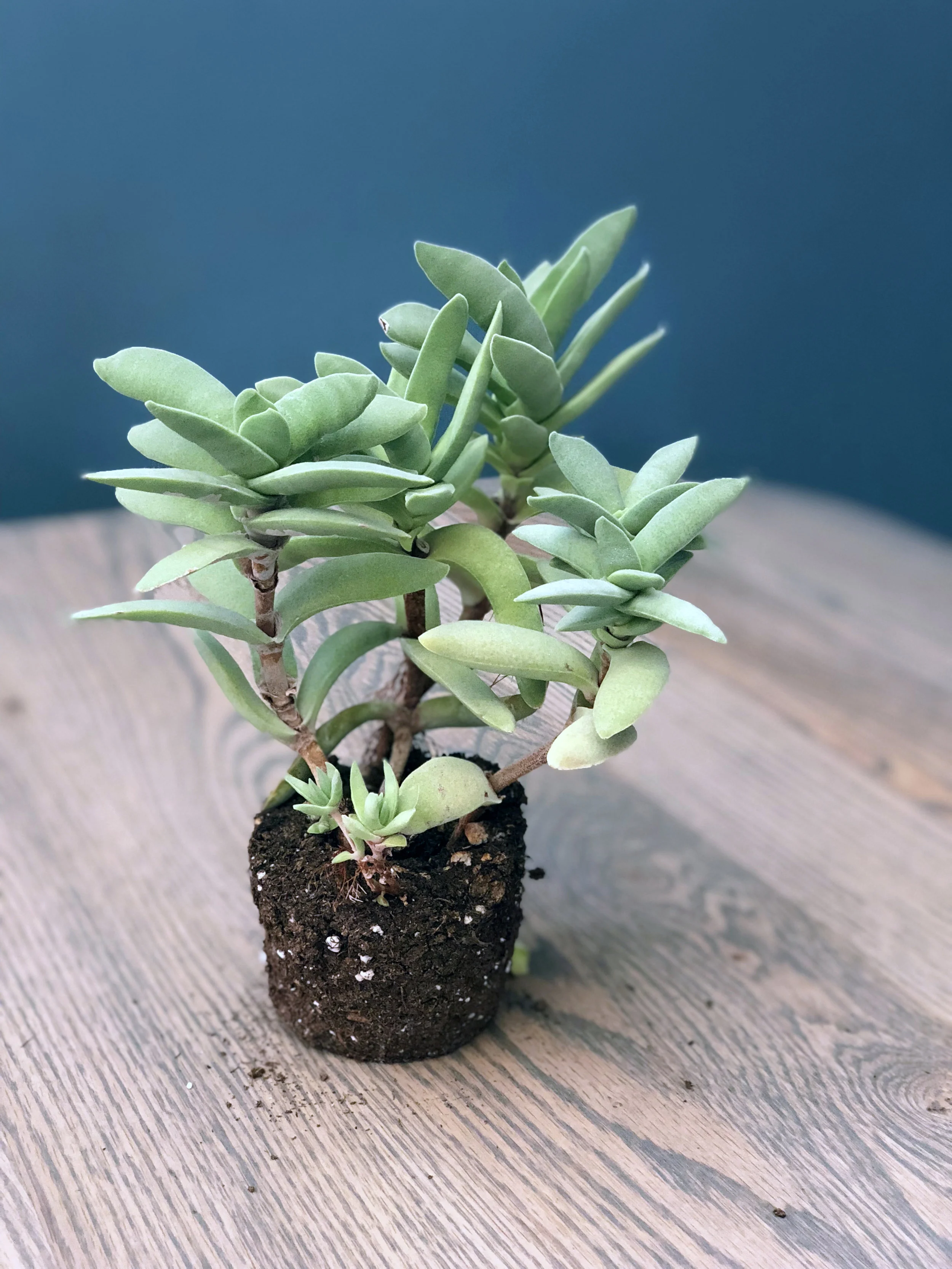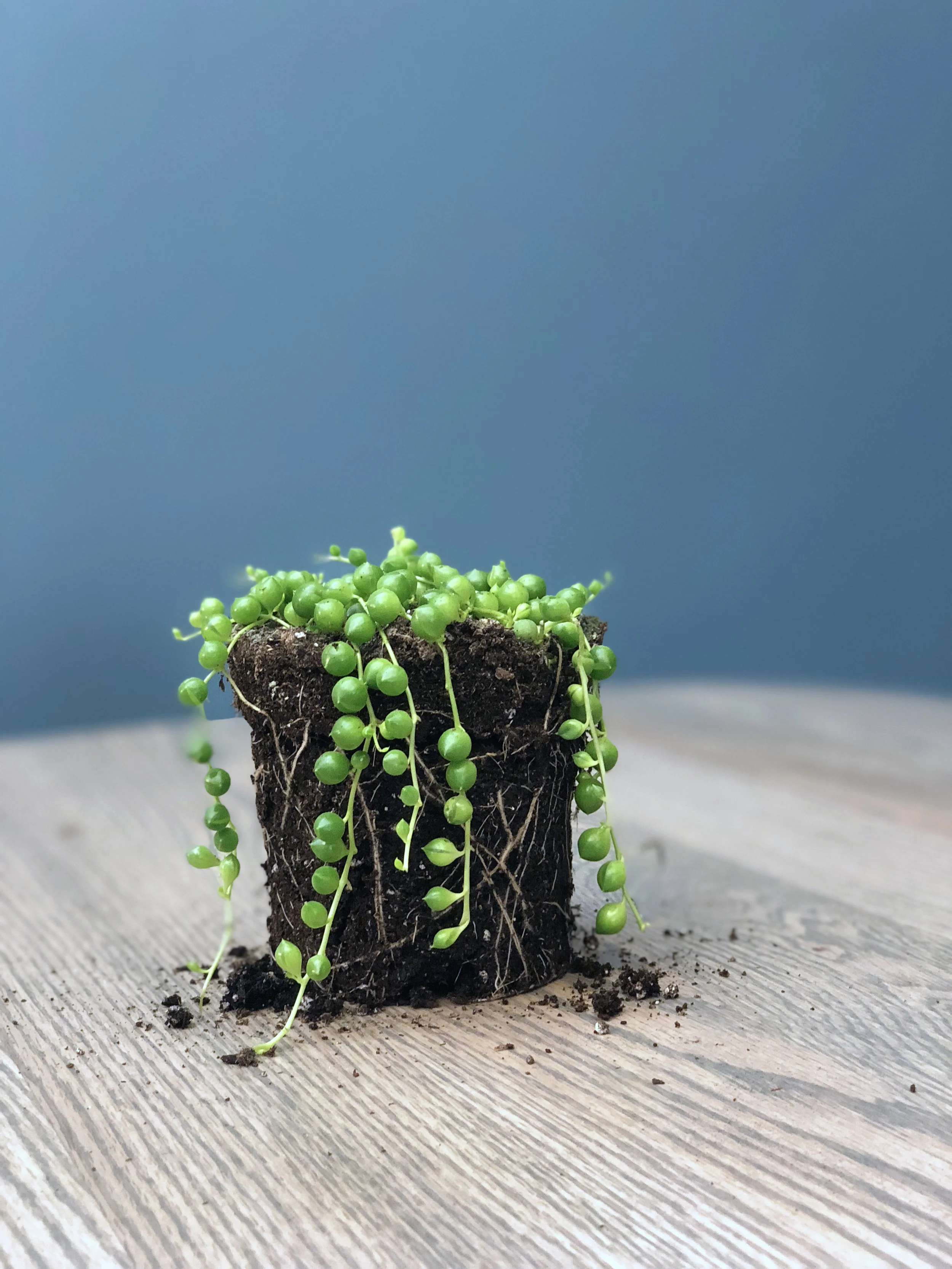A Guide to Succulents & Cacti
Have you ever thought about adding a cactus or succulent to your houseplant family but were overwhelmed by the sheer number of choices? You are not alone. There are thousands of species of succulents and cacti around the world. In fact, the Mammillaria genus of cactus has over 200 known species and the Echeveria genus over 150!
Many have been cultivated to be excellent, slow-growing houseplants that need little care. This guide only touches on a few of the many varieties available, but it’s a good place to start if you’re interested in learning more about these fascinating plants.
What is a succulent?
A plant is called a succulent if it has thick, fleshy tissues that have adapted to store water. Cacti, which are a type of succulent, mainly store water in their stems, while many other types of succulents store water in their leaves or roots. Did you know that succulents are are found on every continent except Antarctica? Most cacti, however, are native to the Americas.
How do I care for succulents & cacti?
The first thing to know about many (but not all) succulents and cacti is this: they want - no, they need - full sun in order to thrive. They are not going to be happy in a shady, dark corner. Another important tip: do not overwater them. Dry is better than wet and, once overwatered, they rarely make a full recovery. In fact, succulents appreciate being left alone much of the time, so if you’re a hands-off kind of a plant parent, they may be just what you’re looking for!
Some general care tips:
Use succulent and cactus soil, which is lighter and doesn’t hold onto too much water
Place them in full sun or the brightest indirect light you have (see exceptions below)
Water them sparingly (especially in winter!)
Feed them with a cactus fertilizer when they are actively growing (usually spring and summer)
Below, you will find a few of our favorite succulents and cacti, with specific care tips for each plant. Although some varieties like to be watered more often than others, always err on the side of underwatering, especially in winter. This list is most certainly not exhaustive - consider it more of a primer! :)
Agave & Aloe
Fun facts:
Agave and aloe are both members of the Asparagales order (the same order of asparagus and lilies!) Aloe is a genus of over 500 species of flowering succulent plants, some known for their healing properties. Agave is pollinated by the Mexican long-nosed bat, who feeds on the plant’s nectar using its long muzzle, much like a hummingbird does.
Quadricolor Agave
Agave univittata ‘Quadricolor’
Full sun
Water in spring and summer when the soil has begun to dry out (to about 1”). Let dry out thoroughly before watering in the fall and winter.
Feed regularly during the growing seasons
Aloe vera
Aloe barbadensis miller
Bright light; too much hot sun may scorch leaves
Water regularly, allowing the soil to dry out between waterings
Fertilizing once a year is sufficient
Blue Elf Aloe
Aloe ‘Blue Elf’
Bright light; too much hot sun may scorch leaves
Water regularly, allowing the soil to dry out between waterings
Fertilizing once a year is sufficient
Cactus
Fun facts:
Cacti have spines instead of leaves. In fact, the word "cactus" comes from the Ancient Greek κάκτος, meaning a spiny plant whose identity is not certain. You can drink the water from a cactus (a good thing to know if you’re ever lost in the desert).
Silver Torch Cactus
Cleistocactus strausii
Full Sun
Let the soil nearly dry out between waterings. Water more often in spring and summer, very rarely in fall and winter
Fertilize monthly during the growing seasons
Copper Ladyfinger Cactus
Mammillaria elongata ‘Copper King’
Full Sun
Let the soil nearly dry out between waterings. Water more often in spring and summer, very rarely in fall and winter
Fertilize monthly during the growing seasons
Pincushion Cactus
Mammillaria species
Full Sun
Let the soil nearly dry out between waterings. Water more often in spring and summer, very rarely in fall and winter
Fertilize monthly during the growing seasons
Blue Barrel Cactus
Ferocactus glaucescens
Full Sun
Let the soil nearly dry out between waterings. Water more often in spring and summer, very rarely in fall and winter
Fertilize monthly during the growing seasons
Old Lady Cactus
Mammillaria hahniana
Full Sun
Let the soil nearly dry out between waterings. Water more often in spring and summer, very rarely in fall and winter
Fertilize monthly during the growing seasons
Crassula
Fun facts:
There are 200 species of Crassula, from plants that are 1-inch tall to some over 6-feet tall. They are native to many parts of the world, but most cultivated varieties come from the Eastern Cape of South Africa.
String of Buttons
Crassula perforata ‘Variegata’
Bright light to full sun
Water thoroughly then let dry out completely before watering again
Fertilize at most once a month in the growing seasons
Propeller Plant
Crassula falcata
Full sun
Let soil dry out between waterings
Feed sparingly in the growing seasons
Crosby Jade
Crassula ovata ‘Crosby’
Full sun
Water regularly when the soil has dried to 1”-2”. Reduce watering in winter
Fertilize at most once a month in the growing seasons
Mini Jade
Crassula ovata ‘Minima’
Full sun
Water regularly when the soil has dried to 1”-2”. Reduce watering in winter
Fertilize at most once a month in the growing seasons
Echeveria
Fun facts:
Named for the 18th-century Mexican botanical artist, Atanasio Echeverría y Godoy, the plants in this genus have a rosette shape with flowers forming on short stocks that grow from between the leaves. Many are popularly called hen-and-chickens because new plantlets often develop in a cluster around the parent plant.
Echeveria
‘Perle Von Nurnberg’
Full sun to bright light (more sun if they begin to stretch)
Let the soil dry out completely between waterings. Try to avoid getting water on the center of the rosette
Fertilize sparingly in the growing seasons
Echeveria
Echeveria ‘Parva’
Full sun to bright light (more sun if they begin to stretch)
Let the soil dry out completely between waterings. Try to avoid getting water on the center of the rosette
Fertilize sparingly in the growing seasons
Echeveria
Echeveria haagai ‘Tolimanensis’
Full sun to bright light (more sun if they begin to stretch)
Let the soil dry out completely between waterings. Try to avoid getting water on the center of the rosette
Fertilize sparingly in the growing seasons
Echeveria
Echeveria purpusorum
Full sun to bright light (more sun if they begin to stretch)
Let the soil dry out completely between waterings. Try to avoid getting water on the center of the rosette
Fertilize sparingly in the growing seasons
Haworthia
Fun facts:
Haworthia are endemic (native and restricted to) Southern Africa. Common names for different Haworthia species include zebra plant, pearl plant, star window plant, and fairy washboard. Haworthia are one of the few succulents that prefer indirect light.
Pearl Plant
Haworthia fasciata ‘Albert’
Very bright indirect light (white, yellow, or red-tinged leaves can mean too much sun)
Water when the top 2” of the soil has dried out (reddish leaves can mean they are under-watered and/or in too much sun)
Fertilize monthly in the growing seasons
Fairy Wash
board
Haworthia limifolia
Very bright indirect light (white, yellow, or red-tinged leaves can mean too much sun)
Water when the top 2” of the soil has dried out (reddish leaves can mean they are under-watered and/or in too much sun)
Fertilize monthly in the growing seasons
Haworthia
Haworthia aristata
Very bright indirect light (white, yellow, or red-tinged leaves can mean too much sun)
Water when the top 2” of the soil has dried out (reddish leaves can mean they are under-watered and/or in too much sun)
Fertilize monthly in the growing seasons
Sedum
Fun facts:
Sedum is a genus of over 400 species in the same family as the Crassula and Echeveria. Sedum species are sometimes referred to as stonecrop because they are often found growing on or amongst stones.
Jelly Bean Plant
Sedum rubrotinctum
Full sun to bright light (pink color is brighter in full sun)
Let the soil dry out completely between waterings.
Fertilize sparingly in the growing seasons
Burro’s Tail
Sedum morganianum
Full sun to bright light
Let the soil dry out completely between waterings.
Fertilize sparingly in the growing seasons
Stonecrop
Sedum nussbaumerianum
Full sun to bright light
Let the soil dry out completely between waterings.
Fertilize sparingly in the growing seasons
Unusual Succulents
Fun facts:
These four plants are fun and unique. The first two are in the genus Senecio, which has over 1,000 species around the world, about 100 of which are succulents. Walking Kalanchoe is so named because the plant produces baby plantlets at the ends of long stems that bend to the ground and eventually root. Cryptanthus is a Bromeliad whose name comes from the Greek words for hidden flower. It can be found growing on the rainforest floors of Brazil.
String of Pearls
Senecio rowleyanus
Bright light to full sun
Water thoroughly then let dry out completely before watering again
Fertilize monthly in the growing seasons
Pickle Plant
Senecio stapeliaeformis
Very bright indirect light or morning sun and dappled afternoon shade
Water when the top 1-2” of the soil has dried out
Fertilize monthly in the growing seasons
Walking Kalanchoe
Kalanchoe synsepala
Bright light to partial sun (hot sun may burn the tips of the leaves)
Let the top 1” of the soil dry out between waterings. In winter, let the plant nearly dry out between waterings
Feed weekly in the growing seasons
Earth Star
Cryptanthus bivittatus ‘Pink Starlite’
Bright indirect light
Keep lightly moist and provide some humidity (they like terrariums!)
Fertilize weekly during the growing seasons
Remember that your relationship to your houseplants is a personal one and that you will continue to learn about your individual plants’ preferences along the way. As you care for them, you will begin to notice if one pot dries out a little faster than the others (my jade, for example, wants more water than the succulents around it) and if another grows unevenly towards the light (time to turn it or give it more light). Experimentation and time will help you care for your plants and, hopefully, this guide will be helpful to you as well!
If you have questions or concerns about your plants, reach out to Swansons on Facebook, Twitter, or Instagram using #heyswansons. We’d love to help! Check out more blog posts on houseplants in the Indoor Gardener section of our blog and houseplant care tips on our NW Gardening Tips page.


